Keynote Speakers
The Tail of a Turtle Herpesvirus
Saturday, July 18, 17:40-18:20

Opening Session Speaker
Mathias Ackermann
Universität Zürich, Switzerland
Biography
The Tail of a Turtle Herpesvirus
We live in a time, where translational, applied, “useful” research is in a very high demand. Without arguing against the values of that, I am, in this talk, strongly advocating curiosity-driven research. Out of curiosity, I chose the Chelonid herpesvirus 5 (ChHV5) as my study object, starting at a time, where this virus was not even known by its present name. However, it was suspected to exist by Veterinarians and marine biologists as its DNA was strongly associated to “fibropapillomatosis” (FP), i.e. tumors on the skin and in various mucosae of marine turtles. Meanwhile, the virus has been fully sequenced and many of its biological properties have been described, although the Koch’s postulates, proving that ChHV5 is actually the agent of FP, have not yet been fulfilled. Throughout my talk, I will try to convince you that ChHV5 is a very ancient virus and that, as an exception to the rule, it relies heavily on tumor formation to be transmitted in order to survive in nature. I also wish to instill a longing within my audience and curiosity that makes them go to fulfill their dreams.
Opening Session Speaker
Saturday, July 18, 17:00-17:40

Opening Session Speaker
Ann Arvin, Professor of Pediatrics, and Microbiology & immunology
Stanford University, California
Biography
Keynote Speaker

Keynote Speaker
Chris Boutell
University of Glasgow, United Kingdom
Biography
Keynote Speaker
Monday, July 20, 8:30-9:10

Keynote Speaker
Wolfram Brune
Heinrich Pette Institute, Germany
Biography
Keynote Speaker
Sunday, July 19, 9:00-9:40

Keynote Speaker
Mariapia Degli-Esposti
Monash University , Australia
Biography
Closing Session Speaker
Wednesday, July 22, 15:30-16:10

Closing Session Speaker
Lynn Enquist
Princeton University, United States
Biography
Symposium Speaker
Tuesday, July 21, 14:35-15:00
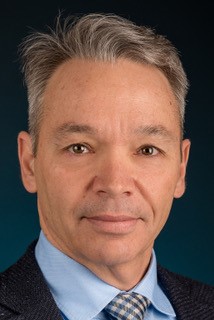
Symposium Speaker
Louis Flamand
Centre De Recherche, Canada
Biography
Novel Roles of Epstein-Barr Virus Proteins in SUMOylation and APOBEC Neutralization
Wednesday, July 22, 14:10-14:35

Symposium Speaker
Lori Frappier
University of Toronto, Canada
Biography
Novel Roles of Epstein-Barr Virus Proteins in SUMOylation and APOBEC Neutralization
In lytic infection, Epstein-Barr virus must manipulate many cellular processes in order to avoid host antiviral responses, ensure cell survival and provide an optimum environment for virion production. However, the viral proteins and mechanisms involved in these roles are incompletely understood. The functions of many host and viral proteins and antiviral responses are regulated by SUMOylation. We screened a library of EBV proteins for those that affect SUMOylation of cellular proteins, identifying a few that upregulate SUMOylation and one that degrades SUMOylated proteins. Among these, the EBV SM protein, known to function in viral mRNA export, was found to induce SUMOylation and this activity was conserved in homologues in HSV-1 (ICP27/UL54) and CMV (UL69). All three homologues were subsequently shown to be SUMO E3 ligases; the first SUMO ligases reported for these three viruses. We have also used affinity purification- mass spectroscopy to identify host proteins targeted by specific EBV proteins. An exciting finding was that EBV BORF2 (the ribonucleotide reductase large subunit) bound the cellular cytosine deaminase APOBEC3B (A3B) and relocalized it from the replicating EBV genomes in the nucleus into the cytoplasm. Other APOBEC family members are known to restrict infection of HIV and some other viruses by mutating their replicating genomes. We showed that loss of BORF2 led to A3B-dependent hypermutation of EBV genomes and reduced infectivity, implicating A3B as a restriction factor for EBV and possibly other herpesviruses. Accordingly, the BORF2 homologue in Kaposi’s sarcoma associated herpesvirus (ORF61) also bound and relocalized A3B, suggesting that this mechanism of disabling A3B to protect viral genome integrity is conserved in γ-herpesviruses. Replicating α and β herpesvirus genomes are also expected to be susceptible to A3B mutation and their mechanisms of A3B neutralization are being investigated.
Keynote Speaker
Wednesday, July 22, 8:30-9:10
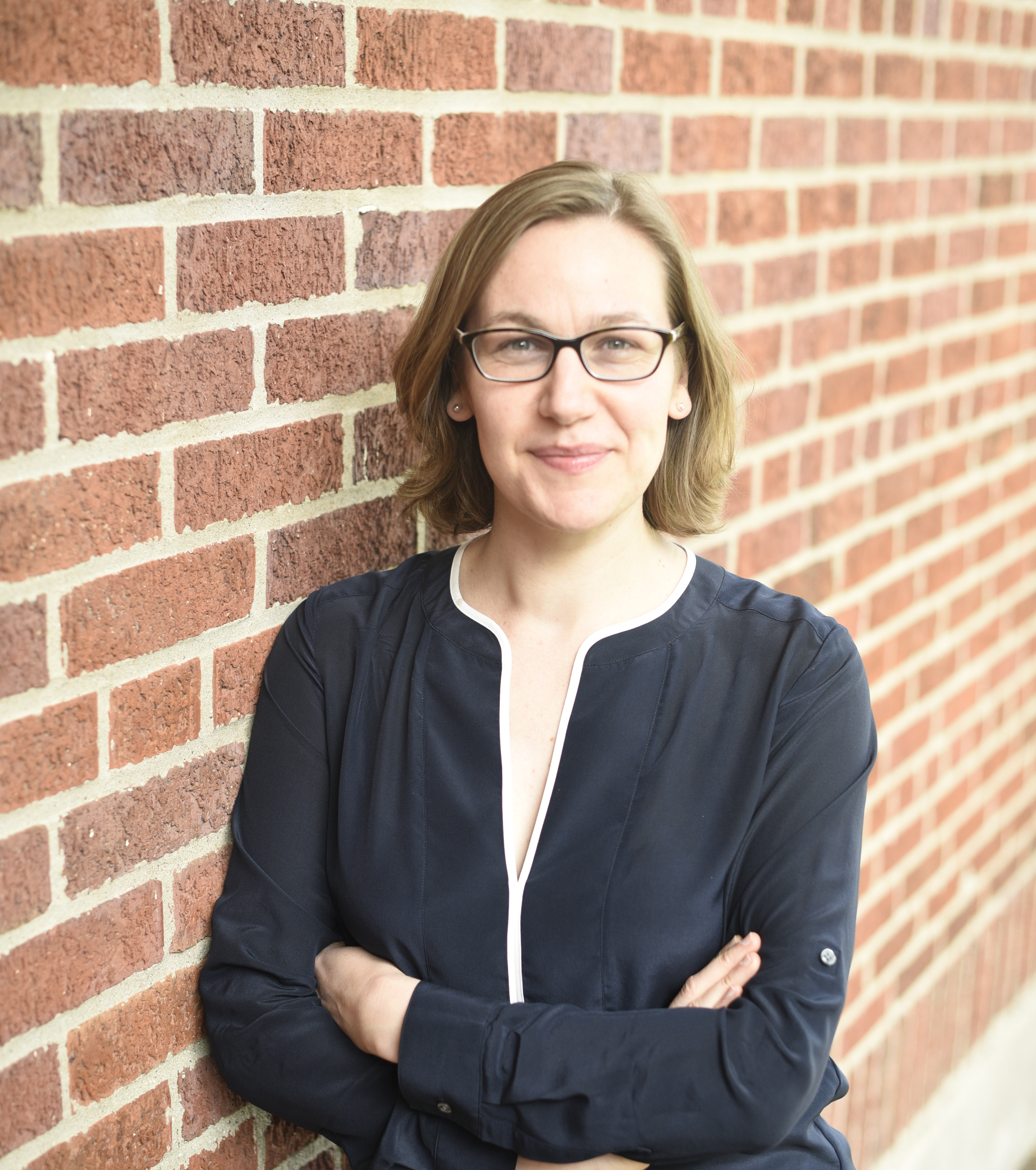
Keynote Speaker
Eva Gottwein
Northwestern University, IL
Biography
Symposium Speaker
Tuesday, July 21, 9:35-10:00

Symposium Speaker
Adam Grundhoff
Heinrich Pette Institute, Germany
Biography
Understanding the Role of Conserved Herpesviral Genes During Natural Infection and Interindividual Spread
Tuesday, July 21, 14:10-14:35

Symposium Speaker
Keith Jarosinski, Assistant Professor
University of Illinois College of Veterinary Medicine, Illinois
Biography
Understanding the Role of Conserved Herpesviral Genes During Natural Infection and Interindividual Spread
Marek’s disease is a deadly disease primarily affecting chickens that has a significant impact on the poultry industry. Virtually all chickens worldwide have been vaccinated against Marek’s disease alphaherpesvirus (MDV) since the 1970’s. MDV is strictly cell-associated in cell culture and during replication in chickens. However, when MDV reaches the feather follicle epithelial (FFE) cells in the skin, fully infectious cell-free virus (CFV) is produced and it is believed this form of virus is required for chicken to chicken transmission. This is like human varicella zoster virus in which the virus has evolved to complete its replicative cycle in epithelial skin cells where it is shed into the environment. The strict cell-associated nature of MDV in cell culture and cell-free nature in the skin makes it a terrific model to study viral genes important for cell-to-cell spread (CCS) and complete viral assembly in the natural hosts. With these unique characteristics and the ease with which to study MDV in chickens, we fortuitously identified two herpesviral proteins, previously thought to have limited importance in during replication, to be absolutely essential for interindividual spread of MDV from chicken to chicken. Without utilizing the natural herpesvirus-host model system, the great importance for these genes in the grand scheme of the herpesvirus lifecycle would have been difficult to identify. With this work, we identified the Herpesviridae conserved herpesvirus protein kinase (CHPK) and the Alphaherpesvirinae conserved glycoprotein C are both required, individually, for interindividual spread of MDV. This talk with summarize the history of these findings and our current research into understanding the roles each essential protein plays during natural infection.
Symposium Speaker
Monday, July 20, 9:35-10:00

Symposium Speaker
Rob Kalejta
University of Wisconsin, United States
Biography
Symposium Speaker
Wednesday, July 22, 14:35-15:00

Symposium Speaker
Maria Masucci
Karolinska Institutet, Sweden
Biography
Keynote Speaker
Tuesday, July 21, 13:30-14:10
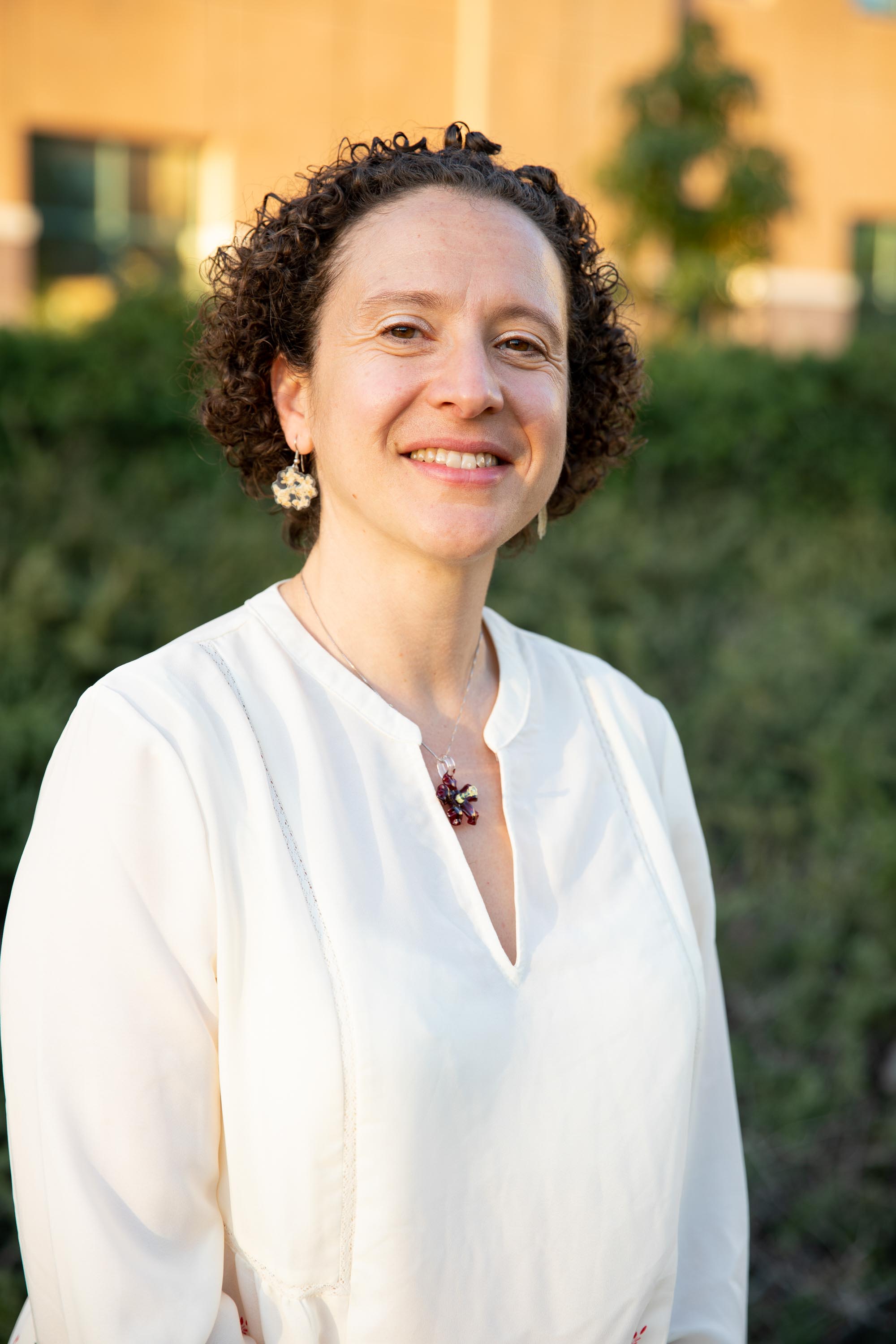
Keynote Speaker
Ilhem Messaoudi
UC Irvine, United States
Biography
Symposium Speaker
Sunday, July 19, 9:40-10:05
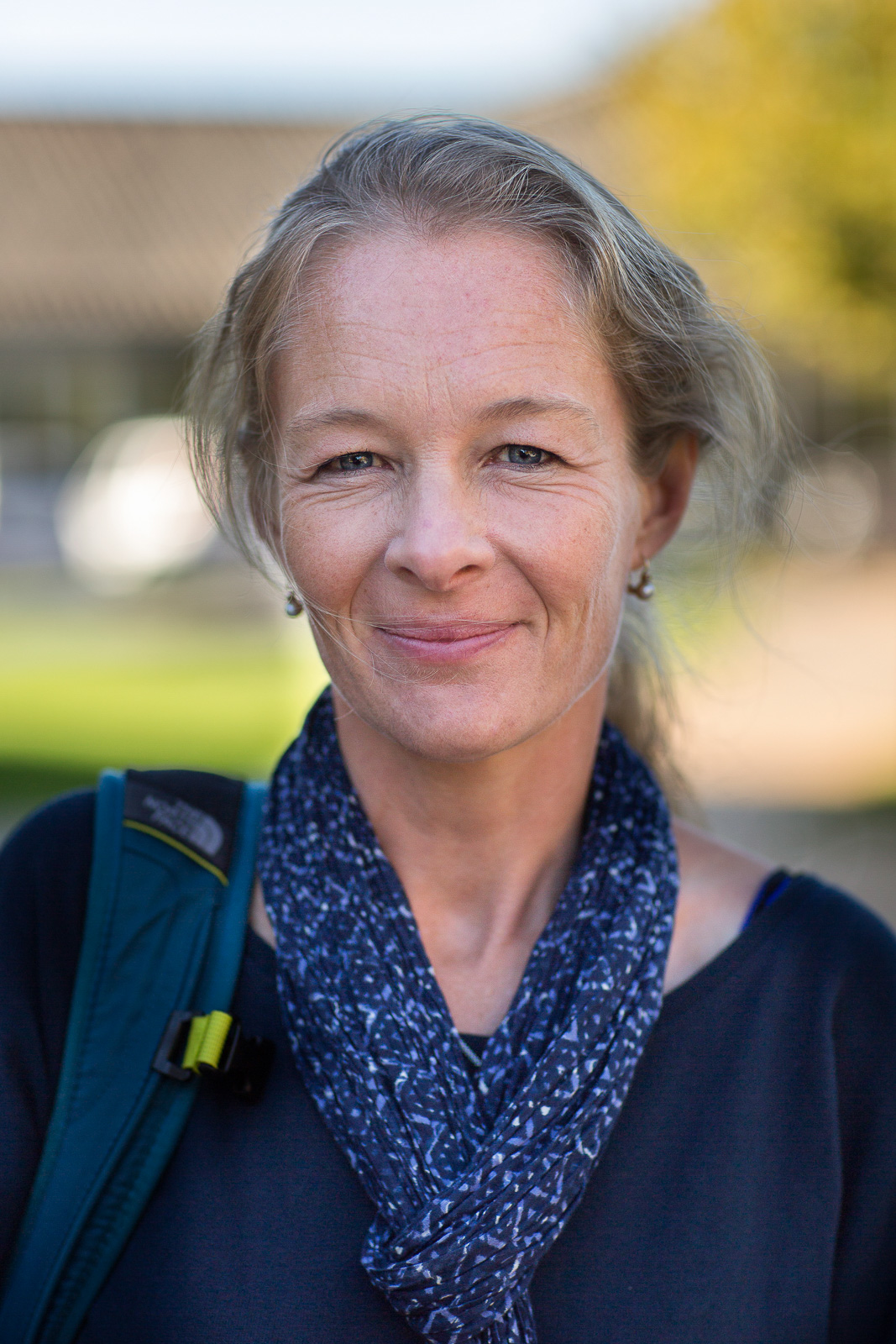
Symposium Speaker
Trine Mogensen
Aarhus University, Denmark
Biography
Keynote Speaker
Wednesday, July 22, 13:30-14:10

Keynote Speaker
Päivi Ojala
University of Helsinki, Finland & Imperial College London, United Kingdom
Biography
Symposium Speaker
Wednesday, July 22, 9:10-9:35
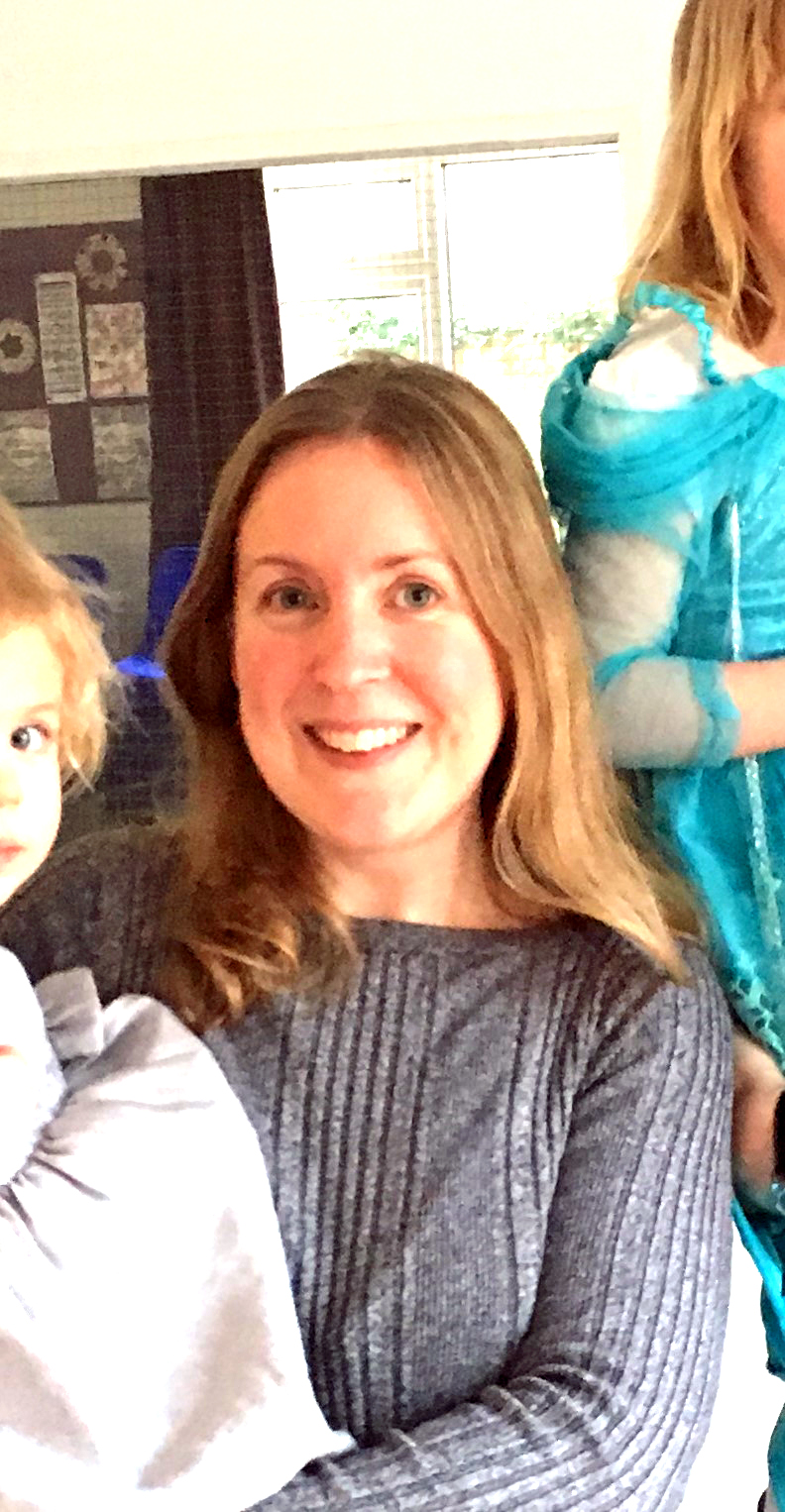
Symposium Speaker
Emma Poole
University of Cambridge, United Kingdom
Biography
Impact of cytomegalovirus infection on hematopoietic cell transplantation: insights from 30 years of research in the mouse model
Saturday, July 18, 18:20-19:00

Opening Session Speaker
Matthias J. Reddehase, University Professor Dr.
University Medical Center of the Johannes Gutenberg-University Mainz, Germany
Biography
Impact of cytomegalovirus infection on hematopoietic cell transplantation: insights from 30 years of research in the mouse model
Hematopoietic cell transplantation (HCT) is the last therapeutic option for aggressive hematopoietic malignancies that are refractory to standard therapies. Hematoablative treatment of HCT recipients, aimed at eliminating leukemic cells, also wipes out the immune system and thereby causes a state of transient immunodeficiency until donor-derived hematopoietic stem cells reconstitute the immune system. The period between HCT and completion of reconstitution is a ‚window of risk‘ for the patient in that it provides a ‚window of opportunity‘ for reactivation of latent CMV. Disastrously, in a feedback loop, reactivated CMV inhibits reconstitution by infection of hematopoietic cells and bone marrow stroma cells, thereby firing its own multiplication and cytopathogenic spread in multiple host tissues, ultimately resulting in an often lethal interstitial pneumonia.
Mouse models, provided they are carefully designed to meet a clinical correlate, allow experimental approaches and the use of viruses with targeted mutations to address questions that cannot be answered by clinical investigation. Although due regard must be given to differences in host and viral parameters, virus-host co-speciation has led to convergent principles of viral pathogenesis and host control in human and murine CMVs.
Here I will review insights from mouse models of HCT and murine CMV infection that have provided ‘proof of concept‘ for clinical translation years later. The mouse model of syngeneic HCT, that is HCT with donors and recipients matched in major (MHC) and minor histocompatibility loci, has shown the importance of CD8+ T-cell reconstitution for CMV control, an insight that led to the concept of bridging the ‚window of risk‘ by an HCT-supplementing transfer of mature virus-specific CD8+ T cells, better known as ‚cellular immunotherapy‘. More recent studies in MHC or minor histocompatibility antigen-mismatched HCTs suggest that immunogenetic mismatches promote lethal CMV disease not through graft-versus-host (GvH) reaction but by inhibition of protective CD8+ T-cell reconstitution.
Efficient Elimination of Both Lytic and Latent Cytomegalovirus (CMV) Infections by a Novel Fusion-toxin Protein Approach Targeting the CMV-encoded Chemokine Receptor US28
Monday, July 20, 9:10-9:35

Symposium Speaker
Mette Rosenkilde
University of Copenhagen, Denmark
Biography
Efficient Elimination of Both Lytic and Latent Cytomegalovirus (CMV) Infections by a Novel Fusion-toxin Protein Approach Targeting the CMV-encoded Chemokine Receptor US28
The market for cytomegalovirus (CMV) therapeutics is primarily driven by infections in patients undergoing either solid organ transplantation (SOT) or hematopoietic stem cell transplantation (HSCT). Current treatment opportunities including Valcyte and Letermovir/PREVYMIS are associated with either significant side effects or limited efficacy. Novel safe and efficient drugs targeting CMV infections are therefore a high priority.
We have developed a novel intervention strategy building upon the development of a highly efficient biopharmaceutical targeting CMV infections through targeting of the CMV-encoded receptor US28. This broad-spectrum chemokine receptor binds and scavenges multiple CC- and CX3C-chemokines. It signals with high constitutive activity and internalizes ligand-independently. The biopharmaceutical developed in our group is a fusion toxin protein (FTP) between a modified CX3CL1 and a trimmed pseudomonas exotoxin A. The FTP selectively binds to and kills CMV infected cells via high affinity interaction with US28 that is only expressed in virus-infected cels. It shows superior efficacy and potency over ganciclovir in vitro as well as in an in vivo model for human CMV infection.
Since US28 is also expressed during latency, this targeting mechanism allows the opportunity to target and kill the latently infected cells, including latently infected CD34+ progenitor cells. The unique ability to kill both lytic and latently infected cells allows for unprecedented opportunities for medicinal treatment of CMV infected transplant recipients, including the opportunity to treat organs and cells ex vivo before transplantation as well as systemic treatment of patients undergong transplantation.
Symposium Speaker
Sunday, July 19, 14:10-14:35

Symposium Speaker
Beate Sodeik
Hannover Medical School, Germany
Biography
Symposium Speaker
Tuesday, July 21, 9:10-9:35

Symposium Speaker
Noam Stern-Ginossar
Weizmann Institute of Science , Israel
Biography
Symposium Speaker
Sunday, July 19, 13:30-14:10

Symposium Speaker
Domenico Tortorella
Icahn School of Medicine at Mount Sinai, United States
Biography
VZV Lecture

VZV Lecture
Georges Verjans
Erasmus MC, Germany
Biography
Opening Session Speaker

Opening Session Speaker
Skip Virgin
VIR, United States
Biography
Symposium Speaker
Sunday, July 19, 10:05-10:30

Symposium Speaker
Mark Wills
University of Cambridge, United Kingdom
Biography
Symposium Speaker
Wednesday, July 22, 9:35-10:00

Symposium Speaker
Angus Willson
New York University School of Medicine, United States
Biography
Symposium Speaker
Sunday, July 19, 14:35-15:00
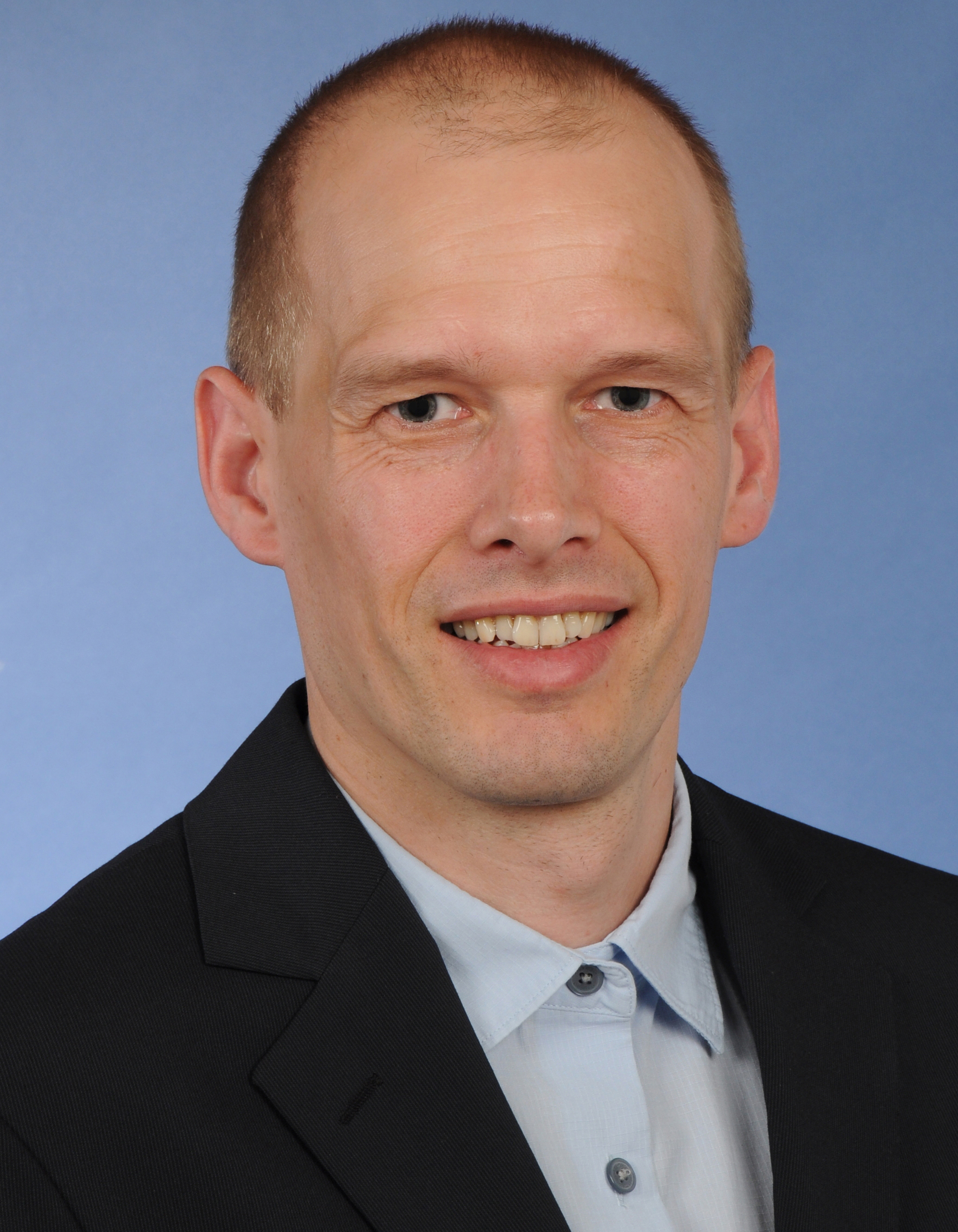
Symposium Speaker
Jens von Einem
University Hospital Ulm, Germany
Biography

|
Opening Session Speaker
Mathias Ackermann
Universität Zürich, Switzerland Biography |
|
The Tail of a Turtle Herpesvirus We live in a time, where translational, applied, “useful” research is in a very high demand. Without arguing against the values of that, I am, in this talk, strongly advocating curiosity-driven research. Out of curiosity, I chose the Chelonid herpesvirus 5 (ChHV5) as my study object, starting at a time, where this virus was not even known by its present name. However, it was suspected to exist by Veterinarians and marine biologists as its DNA was strongly associated to “fibropapillomatosis” (FP), i.e. tumors on the skin and in various mucosae of marine turtles. Meanwhile, the virus has been fully sequenced and many of its biological properties have been described, although the Koch’s postulates, proving that ChHV5 is actually the agent of FP, have not yet been fulfilled. Throughout my talk, I will try to convince you that ChHV5 is a very ancient virus and that, as an exception to the rule, it relies heavily on tumor formation to be transmitted in order to survive in nature. I also wish to instill a longing within my audience and curiosity that makes them go to fulfill their dreams. |
|
Saturday, July 18, 17:00-17:40

|
Opening Session Speaker
Ann Arvin, Professor of Pediatrics, and Microbiology & immunology
Stanford University, California Biography |
Keynote Speaker

Keynote Speaker
Chris Boutell
University of Glasgow, United Kingdom
Biography
Keynote Speaker
Monday, July 20, 8:30-9:10

Keynote Speaker
Wolfram Brune
Heinrich Pette Institute, Germany
Biography
Keynote Speaker
Sunday, July 19, 9:00-9:40

Keynote Speaker
Mariapia Degli-Esposti
Monash University , Australia
Biography
Closing Session Speaker
Wednesday, July 22, 15:30-16:10

Closing Session Speaker
Lynn Enquist
Princeton University, United States
Biography
Symposium Speaker
Tuesday, July 21, 14:35-15:00

Symposium Speaker
Louis Flamand
Centre De Recherche, Canada
Biography
Novel Roles of Epstein-Barr Virus Proteins in SUMOylation and APOBEC Neutralization
Wednesday, July 22, 14:10-14:35

Symposium Speaker
Lori Frappier
University of Toronto, Canada
Biography
Novel Roles of Epstein-Barr Virus Proteins in SUMOylation and APOBEC Neutralization
In lytic infection, Epstein-Barr virus must manipulate many cellular processes in order to avoid host antiviral responses, ensure cell survival and provide an optimum environment for virion production. However, the viral proteins and mechanisms involved in these roles are incompletely understood. The functions of many host and viral proteins and antiviral responses are regulated by SUMOylation. We screened a library of EBV proteins for those that affect SUMOylation of cellular proteins, identifying a few that upregulate SUMOylation and one that degrades SUMOylated proteins. Among these, the EBV SM protein, known to function in viral mRNA export, was found to induce SUMOylation and this activity was conserved in homologues in HSV-1 (ICP27/UL54) and CMV (UL69). All three homologues were subsequently shown to be SUMO E3 ligases; the first SUMO ligases reported for these three viruses. We have also used affinity purification- mass spectroscopy to identify host proteins targeted by specific EBV proteins. An exciting finding was that EBV BORF2 (the ribonucleotide reductase large subunit) bound the cellular cytosine deaminase APOBEC3B (A3B) and relocalized it from the replicating EBV genomes in the nucleus into the cytoplasm. Other APOBEC family members are known to restrict infection of HIV and some other viruses by mutating their replicating genomes. We showed that loss of BORF2 led to A3B-dependent hypermutation of EBV genomes and reduced infectivity, implicating A3B as a restriction factor for EBV and possibly other herpesviruses. Accordingly, the BORF2 homologue in Kaposi’s sarcoma associated herpesvirus (ORF61) also bound and relocalized A3B, suggesting that this mechanism of disabling A3B to protect viral genome integrity is conserved in γ-herpesviruses. Replicating α and β herpesvirus genomes are also expected to be susceptible to A3B mutation and their mechanisms of A3B neutralization are being investigated.
Keynote Speaker
Wednesday, July 22, 8:30-9:10

Keynote Speaker
Eva Gottwein
Northwestern University, IL
Biography
Symposium Speaker
Tuesday, July 21, 9:35-10:00

Symposium Speaker
Adam Grundhoff
Heinrich Pette Institute, Germany
Biography
Understanding the Role of Conserved Herpesviral Genes During Natural Infection and Interindividual Spread
Tuesday, July 21, 14:10-14:35

Symposium Speaker
Keith Jarosinski, Assistant Professor
University of Illinois College of Veterinary Medicine, Illinois
Biography
Understanding the Role of Conserved Herpesviral Genes During Natural Infection and Interindividual Spread
Marek’s disease is a deadly disease primarily affecting chickens that has a significant impact on the poultry industry. Virtually all chickens worldwide have been vaccinated against Marek’s disease alphaherpesvirus (MDV) since the 1970’s. MDV is strictly cell-associated in cell culture and during replication in chickens. However, when MDV reaches the feather follicle epithelial (FFE) cells in the skin, fully infectious cell-free virus (CFV) is produced and it is believed this form of virus is required for chicken to chicken transmission. This is like human varicella zoster virus in which the virus has evolved to complete its replicative cycle in epithelial skin cells where it is shed into the environment. The strict cell-associated nature of MDV in cell culture and cell-free nature in the skin makes it a terrific model to study viral genes important for cell-to-cell spread (CCS) and complete viral assembly in the natural hosts. With these unique characteristics and the ease with which to study MDV in chickens, we fortuitously identified two herpesviral proteins, previously thought to have limited importance in during replication, to be absolutely essential for interindividual spread of MDV from chicken to chicken. Without utilizing the natural herpesvirus-host model system, the great importance for these genes in the grand scheme of the herpesvirus lifecycle would have been difficult to identify. With this work, we identified the Herpesviridae conserved herpesvirus protein kinase (CHPK) and the Alphaherpesvirinae conserved glycoprotein C are both required, individually, for interindividual spread of MDV. This talk with summarize the history of these findings and our current research into understanding the roles each essential protein plays during natural infection.
Symposium Speaker
Monday, July 20, 9:35-10:00

Symposium Speaker
Rob Kalejta
University of Wisconsin, United States
Biography
Symposium Speaker
Wednesday, July 22, 14:35-15:00

Symposium Speaker
Maria Masucci
Karolinska Institutet, Sweden
Biography
Keynote Speaker
Tuesday, July 21, 13:30-14:10

Keynote Speaker
Ilhem Messaoudi
UC Irvine, United States
Biography
Symposium Speaker
Sunday, July 19, 9:40-10:05

Symposium Speaker
Trine Mogensen
Aarhus University, Denmark
Biography
Keynote Speaker
Wednesday, July 22, 13:30-14:10

Keynote Speaker
Päivi Ojala
University of Helsinki, Finland & Imperial College London, United Kingdom
Biography
Symposium Speaker
Wednesday, July 22, 9:10-9:35

Symposium Speaker
Emma Poole
University of Cambridge, United Kingdom
Biography
Impact of cytomegalovirus infection on hematopoietic cell transplantation: insights from 30 years of research in the mouse model
Saturday, July 18, 18:20-19:00

Opening Session Speaker
Matthias J. Reddehase, University Professor Dr.
University Medical Center of the Johannes Gutenberg-University Mainz, Germany
Biography
Impact of cytomegalovirus infection on hematopoietic cell transplantation: insights from 30 years of research in the mouse model
Hematopoietic cell transplantation (HCT) is the last therapeutic option for aggressive hematopoietic malignancies that are refractory to standard therapies. Hematoablative treatment of HCT recipients, aimed at eliminating leukemic cells, also wipes out the immune system and thereby causes a state of transient immunodeficiency until donor-derived hematopoietic stem cells reconstitute the immune system. The period between HCT and completion of reconstitution is a ‚window of risk‘ for the patient in that it provides a ‚window of opportunity‘ for reactivation of latent CMV. Disastrously, in a feedback loop, reactivated CMV inhibits reconstitution by infection of hematopoietic cells and bone marrow stroma cells, thereby firing its own multiplication and cytopathogenic spread in multiple host tissues, ultimately resulting in an often lethal interstitial pneumonia.
Mouse models, provided they are carefully designed to meet a clinical correlate, allow experimental approaches and the use of viruses with targeted mutations to address questions that cannot be answered by clinical investigation. Although due regard must be given to differences in host and viral parameters, virus-host co-speciation has led to convergent principles of viral pathogenesis and host control in human and murine CMVs.
Here I will review insights from mouse models of HCT and murine CMV infection that have provided ‘proof of concept‘ for clinical translation years later. The mouse model of syngeneic HCT, that is HCT with donors and recipients matched in major (MHC) and minor histocompatibility loci, has shown the importance of CD8+ T-cell reconstitution for CMV control, an insight that led to the concept of bridging the ‚window of risk‘ by an HCT-supplementing transfer of mature virus-specific CD8+ T cells, better known as ‚cellular immunotherapy‘. More recent studies in MHC or minor histocompatibility antigen-mismatched HCTs suggest that immunogenetic mismatches promote lethal CMV disease not through graft-versus-host (GvH) reaction but by inhibition of protective CD8+ T-cell reconstitution.
Efficient Elimination of Both Lytic and Latent Cytomegalovirus (CMV) Infections by a Novel Fusion-toxin Protein Approach Targeting the CMV-encoded Chemokine Receptor US28
Monday, July 20, 9:10-9:35

Symposium Speaker
Mette Rosenkilde
University of Copenhagen, Denmark
Biography
Efficient Elimination of Both Lytic and Latent Cytomegalovirus (CMV) Infections by a Novel Fusion-toxin Protein Approach Targeting the CMV-encoded Chemokine Receptor US28
The market for cytomegalovirus (CMV) therapeutics is primarily driven by infections in patients undergoing either solid organ transplantation (SOT) or hematopoietic stem cell transplantation (HSCT). Current treatment opportunities including Valcyte and Letermovir/PREVYMIS are associated with either significant side effects or limited efficacy. Novel safe and efficient drugs targeting CMV infections are therefore a high priority.
We have developed a novel intervention strategy building upon the development of a highly efficient biopharmaceutical targeting CMV infections through targeting of the CMV-encoded receptor US28. This broad-spectrum chemokine receptor binds and scavenges multiple CC- and CX3C-chemokines. It signals with high constitutive activity and internalizes ligand-independently. The biopharmaceutical developed in our group is a fusion toxin protein (FTP) between a modified CX3CL1 and a trimmed pseudomonas exotoxin A. The FTP selectively binds to and kills CMV infected cells via high affinity interaction with US28 that is only expressed in virus-infected cels. It shows superior efficacy and potency over ganciclovir in vitro as well as in an in vivo model for human CMV infection.
Since US28 is also expressed during latency, this targeting mechanism allows the opportunity to target and kill the latently infected cells, including latently infected CD34+ progenitor cells. The unique ability to kill both lytic and latently infected cells allows for unprecedented opportunities for medicinal treatment of CMV infected transplant recipients, including the opportunity to treat organs and cells ex vivo before transplantation as well as systemic treatment of patients undergong transplantation.
Symposium Speaker
Sunday, July 19, 14:10-14:35

Symposium Speaker
Beate Sodeik
Hannover Medical School, Germany
Biography
Symposium Speaker
Tuesday, July 21, 9:10-9:35

Symposium Speaker
Noam Stern-Ginossar
Weizmann Institute of Science , Israel
Biography
Symposium Speaker
Sunday, July 19, 13:30-14:10

Symposium Speaker
Domenico Tortorella
Icahn School of Medicine at Mount Sinai, United States
Biography
VZV Lecture

VZV Lecture
Georges Verjans
Erasmus MC, Germany
Biography
Opening Session Speaker

Opening Session Speaker
Skip Virgin
VIR, United States
Biography
Symposium Speaker
Sunday, July 19, 10:05-10:30

Symposium Speaker
Mark Wills
University of Cambridge, United Kingdom
Biography
Symposium Speaker
Wednesday, July 22, 9:35-10:00

Symposium Speaker
Angus Willson
New York University School of Medicine, United States
Biography
Symposium Speaker
Sunday, July 19, 14:35-15:00

Symposium Speaker
Jens von Einem
University Hospital Ulm, Germany
Biography

|
Keynote Speaker
Chris Boutell
University of Glasgow, United Kingdom Biography |
Monday, July 20, 8:30-9:10

|
Keynote Speaker
Wolfram Brune
Heinrich Pette Institute, Germany Biography |
Keynote Speaker
Sunday, July 19, 9:00-9:40

Keynote Speaker
Mariapia Degli-Esposti
Monash University , Australia
Biography
Closing Session Speaker
Wednesday, July 22, 15:30-16:10

Closing Session Speaker
Lynn Enquist
Princeton University, United States
Biography
Symposium Speaker
Tuesday, July 21, 14:35-15:00

Symposium Speaker
Louis Flamand
Centre De Recherche, Canada
Biography
Novel Roles of Epstein-Barr Virus Proteins in SUMOylation and APOBEC Neutralization
Wednesday, July 22, 14:10-14:35

Symposium Speaker
Lori Frappier
University of Toronto, Canada
Biography
Novel Roles of Epstein-Barr Virus Proteins in SUMOylation and APOBEC Neutralization
In lytic infection, Epstein-Barr virus must manipulate many cellular processes in order to avoid host antiviral responses, ensure cell survival and provide an optimum environment for virion production. However, the viral proteins and mechanisms involved in these roles are incompletely understood. The functions of many host and viral proteins and antiviral responses are regulated by SUMOylation. We screened a library of EBV proteins for those that affect SUMOylation of cellular proteins, identifying a few that upregulate SUMOylation and one that degrades SUMOylated proteins. Among these, the EBV SM protein, known to function in viral mRNA export, was found to induce SUMOylation and this activity was conserved in homologues in HSV-1 (ICP27/UL54) and CMV (UL69). All three homologues were subsequently shown to be SUMO E3 ligases; the first SUMO ligases reported for these three viruses. We have also used affinity purification- mass spectroscopy to identify host proteins targeted by specific EBV proteins. An exciting finding was that EBV BORF2 (the ribonucleotide reductase large subunit) bound the cellular cytosine deaminase APOBEC3B (A3B) and relocalized it from the replicating EBV genomes in the nucleus into the cytoplasm. Other APOBEC family members are known to restrict infection of HIV and some other viruses by mutating their replicating genomes. We showed that loss of BORF2 led to A3B-dependent hypermutation of EBV genomes and reduced infectivity, implicating A3B as a restriction factor for EBV and possibly other herpesviruses. Accordingly, the BORF2 homologue in Kaposi’s sarcoma associated herpesvirus (ORF61) also bound and relocalized A3B, suggesting that this mechanism of disabling A3B to protect viral genome integrity is conserved in γ-herpesviruses. Replicating α and β herpesvirus genomes are also expected to be susceptible to A3B mutation and their mechanisms of A3B neutralization are being investigated.
Keynote Speaker
Wednesday, July 22, 8:30-9:10

Keynote Speaker
Eva Gottwein
Northwestern University, IL
Biography
Symposium Speaker
Tuesday, July 21, 9:35-10:00

Symposium Speaker
Adam Grundhoff
Heinrich Pette Institute, Germany
Biography
Understanding the Role of Conserved Herpesviral Genes During Natural Infection and Interindividual Spread
Tuesday, July 21, 14:10-14:35

Symposium Speaker
Keith Jarosinski, Assistant Professor
University of Illinois College of Veterinary Medicine, Illinois
Biography
Understanding the Role of Conserved Herpesviral Genes During Natural Infection and Interindividual Spread
Marek’s disease is a deadly disease primarily affecting chickens that has a significant impact on the poultry industry. Virtually all chickens worldwide have been vaccinated against Marek’s disease alphaherpesvirus (MDV) since the 1970’s. MDV is strictly cell-associated in cell culture and during replication in chickens. However, when MDV reaches the feather follicle epithelial (FFE) cells in the skin, fully infectious cell-free virus (CFV) is produced and it is believed this form of virus is required for chicken to chicken transmission. This is like human varicella zoster virus in which the virus has evolved to complete its replicative cycle in epithelial skin cells where it is shed into the environment. The strict cell-associated nature of MDV in cell culture and cell-free nature in the skin makes it a terrific model to study viral genes important for cell-to-cell spread (CCS) and complete viral assembly in the natural hosts. With these unique characteristics and the ease with which to study MDV in chickens, we fortuitously identified two herpesviral proteins, previously thought to have limited importance in during replication, to be absolutely essential for interindividual spread of MDV from chicken to chicken. Without utilizing the natural herpesvirus-host model system, the great importance for these genes in the grand scheme of the herpesvirus lifecycle would have been difficult to identify. With this work, we identified the Herpesviridae conserved herpesvirus protein kinase (CHPK) and the Alphaherpesvirinae conserved glycoprotein C are both required, individually, for interindividual spread of MDV. This talk with summarize the history of these findings and our current research into understanding the roles each essential protein plays during natural infection.
Symposium Speaker
Monday, July 20, 9:35-10:00

Symposium Speaker
Rob Kalejta
University of Wisconsin, United States
Biography
Symposium Speaker
Wednesday, July 22, 14:35-15:00

Symposium Speaker
Maria Masucci
Karolinska Institutet, Sweden
Biography
Keynote Speaker
Tuesday, July 21, 13:30-14:10

Keynote Speaker
Ilhem Messaoudi
UC Irvine, United States
Biography
Symposium Speaker
Sunday, July 19, 9:40-10:05

Symposium Speaker
Trine Mogensen
Aarhus University, Denmark
Biography
Keynote Speaker
Wednesday, July 22, 13:30-14:10

Keynote Speaker
Päivi Ojala
University of Helsinki, Finland & Imperial College London, United Kingdom
Biography
Symposium Speaker
Wednesday, July 22, 9:10-9:35

Symposium Speaker
Emma Poole
University of Cambridge, United Kingdom
Biography
Impact of cytomegalovirus infection on hematopoietic cell transplantation: insights from 30 years of research in the mouse model
Saturday, July 18, 18:20-19:00

Opening Session Speaker
Matthias J. Reddehase, University Professor Dr.
University Medical Center of the Johannes Gutenberg-University Mainz, Germany
Biography
Impact of cytomegalovirus infection on hematopoietic cell transplantation: insights from 30 years of research in the mouse model
Hematopoietic cell transplantation (HCT) is the last therapeutic option for aggressive hematopoietic malignancies that are refractory to standard therapies. Hematoablative treatment of HCT recipients, aimed at eliminating leukemic cells, also wipes out the immune system and thereby causes a state of transient immunodeficiency until donor-derived hematopoietic stem cells reconstitute the immune system. The period between HCT and completion of reconstitution is a ‚window of risk‘ for the patient in that it provides a ‚window of opportunity‘ for reactivation of latent CMV. Disastrously, in a feedback loop, reactivated CMV inhibits reconstitution by infection of hematopoietic cells and bone marrow stroma cells, thereby firing its own multiplication and cytopathogenic spread in multiple host tissues, ultimately resulting in an often lethal interstitial pneumonia.
Mouse models, provided they are carefully designed to meet a clinical correlate, allow experimental approaches and the use of viruses with targeted mutations to address questions that cannot be answered by clinical investigation. Although due regard must be given to differences in host and viral parameters, virus-host co-speciation has led to convergent principles of viral pathogenesis and host control in human and murine CMVs.
Here I will review insights from mouse models of HCT and murine CMV infection that have provided ‘proof of concept‘ for clinical translation years later. The mouse model of syngeneic HCT, that is HCT with donors and recipients matched in major (MHC) and minor histocompatibility loci, has shown the importance of CD8+ T-cell reconstitution for CMV control, an insight that led to the concept of bridging the ‚window of risk‘ by an HCT-supplementing transfer of mature virus-specific CD8+ T cells, better known as ‚cellular immunotherapy‘. More recent studies in MHC or minor histocompatibility antigen-mismatched HCTs suggest that immunogenetic mismatches promote lethal CMV disease not through graft-versus-host (GvH) reaction but by inhibition of protective CD8+ T-cell reconstitution.
Efficient Elimination of Both Lytic and Latent Cytomegalovirus (CMV) Infections by a Novel Fusion-toxin Protein Approach Targeting the CMV-encoded Chemokine Receptor US28
Monday, July 20, 9:10-9:35

Symposium Speaker
Mette Rosenkilde
University of Copenhagen, Denmark
Biography
Efficient Elimination of Both Lytic and Latent Cytomegalovirus (CMV) Infections by a Novel Fusion-toxin Protein Approach Targeting the CMV-encoded Chemokine Receptor US28
The market for cytomegalovirus (CMV) therapeutics is primarily driven by infections in patients undergoing either solid organ transplantation (SOT) or hematopoietic stem cell transplantation (HSCT). Current treatment opportunities including Valcyte and Letermovir/PREVYMIS are associated with either significant side effects or limited efficacy. Novel safe and efficient drugs targeting CMV infections are therefore a high priority.
We have developed a novel intervention strategy building upon the development of a highly efficient biopharmaceutical targeting CMV infections through targeting of the CMV-encoded receptor US28. This broad-spectrum chemokine receptor binds and scavenges multiple CC- and CX3C-chemokines. It signals with high constitutive activity and internalizes ligand-independently. The biopharmaceutical developed in our group is a fusion toxin protein (FTP) between a modified CX3CL1 and a trimmed pseudomonas exotoxin A. The FTP selectively binds to and kills CMV infected cells via high affinity interaction with US28 that is only expressed in virus-infected cels. It shows superior efficacy and potency over ganciclovir in vitro as well as in an in vivo model for human CMV infection.
Since US28 is also expressed during latency, this targeting mechanism allows the opportunity to target and kill the latently infected cells, including latently infected CD34+ progenitor cells. The unique ability to kill both lytic and latently infected cells allows for unprecedented opportunities for medicinal treatment of CMV infected transplant recipients, including the opportunity to treat organs and cells ex vivo before transplantation as well as systemic treatment of patients undergong transplantation.
Symposium Speaker
Sunday, July 19, 14:10-14:35

Symposium Speaker
Beate Sodeik
Hannover Medical School, Germany
Biography
Symposium Speaker
Tuesday, July 21, 9:10-9:35

Symposium Speaker
Noam Stern-Ginossar
Weizmann Institute of Science , Israel
Biography
Symposium Speaker
Sunday, July 19, 13:30-14:10

Symposium Speaker
Domenico Tortorella
Icahn School of Medicine at Mount Sinai, United States
Biography
VZV Lecture

VZV Lecture
Georges Verjans
Erasmus MC, Germany
Biography
Opening Session Speaker

Opening Session Speaker
Skip Virgin
VIR, United States
Biography
Symposium Speaker
Sunday, July 19, 10:05-10:30

Symposium Speaker
Mark Wills
University of Cambridge, United Kingdom
Biography
Symposium Speaker
Wednesday, July 22, 9:35-10:00

Symposium Speaker
Angus Willson
New York University School of Medicine, United States
Biography
Symposium Speaker
Sunday, July 19, 14:35-15:00

Symposium Speaker
Jens von Einem
University Hospital Ulm, Germany
Biography

|
Keynote Speaker
Mariapia Degli-Esposti
Monash University , Australia Biography |
Wednesday, July 22, 15:30-16:10

|
Closing Session Speaker
Lynn Enquist
Princeton University, United States Biography |
Symposium Speaker
Tuesday, July 21, 14:35-15:00

Symposium Speaker
Louis Flamand
Centre De Recherche, Canada
Biography
Novel Roles of Epstein-Barr Virus Proteins in SUMOylation and APOBEC Neutralization
Wednesday, July 22, 14:10-14:35

Symposium Speaker
Lori Frappier
University of Toronto, Canada
Biography
Novel Roles of Epstein-Barr Virus Proteins in SUMOylation and APOBEC Neutralization
In lytic infection, Epstein-Barr virus must manipulate many cellular processes in order to avoid host antiviral responses, ensure cell survival and provide an optimum environment for virion production. However, the viral proteins and mechanisms involved in these roles are incompletely understood. The functions of many host and viral proteins and antiviral responses are regulated by SUMOylation. We screened a library of EBV proteins for those that affect SUMOylation of cellular proteins, identifying a few that upregulate SUMOylation and one that degrades SUMOylated proteins. Among these, the EBV SM protein, known to function in viral mRNA export, was found to induce SUMOylation and this activity was conserved in homologues in HSV-1 (ICP27/UL54) and CMV (UL69). All three homologues were subsequently shown to be SUMO E3 ligases; the first SUMO ligases reported for these three viruses. We have also used affinity purification- mass spectroscopy to identify host proteins targeted by specific EBV proteins. An exciting finding was that EBV BORF2 (the ribonucleotide reductase large subunit) bound the cellular cytosine deaminase APOBEC3B (A3B) and relocalized it from the replicating EBV genomes in the nucleus into the cytoplasm. Other APOBEC family members are known to restrict infection of HIV and some other viruses by mutating their replicating genomes. We showed that loss of BORF2 led to A3B-dependent hypermutation of EBV genomes and reduced infectivity, implicating A3B as a restriction factor for EBV and possibly other herpesviruses. Accordingly, the BORF2 homologue in Kaposi’s sarcoma associated herpesvirus (ORF61) also bound and relocalized A3B, suggesting that this mechanism of disabling A3B to protect viral genome integrity is conserved in γ-herpesviruses. Replicating α and β herpesvirus genomes are also expected to be susceptible to A3B mutation and their mechanisms of A3B neutralization are being investigated.
Keynote Speaker
Wednesday, July 22, 8:30-9:10

Keynote Speaker
Eva Gottwein
Northwestern University, IL
Biography
Symposium Speaker
Tuesday, July 21, 9:35-10:00

Symposium Speaker
Adam Grundhoff
Heinrich Pette Institute, Germany
Biography
Understanding the Role of Conserved Herpesviral Genes During Natural Infection and Interindividual Spread
Tuesday, July 21, 14:10-14:35

Symposium Speaker
Keith Jarosinski, Assistant Professor
University of Illinois College of Veterinary Medicine, Illinois
Biography
Understanding the Role of Conserved Herpesviral Genes During Natural Infection and Interindividual Spread
Marek’s disease is a deadly disease primarily affecting chickens that has a significant impact on the poultry industry. Virtually all chickens worldwide have been vaccinated against Marek’s disease alphaherpesvirus (MDV) since the 1970’s. MDV is strictly cell-associated in cell culture and during replication in chickens. However, when MDV reaches the feather follicle epithelial (FFE) cells in the skin, fully infectious cell-free virus (CFV) is produced and it is believed this form of virus is required for chicken to chicken transmission. This is like human varicella zoster virus in which the virus has evolved to complete its replicative cycle in epithelial skin cells where it is shed into the environment. The strict cell-associated nature of MDV in cell culture and cell-free nature in the skin makes it a terrific model to study viral genes important for cell-to-cell spread (CCS) and complete viral assembly in the natural hosts. With these unique characteristics and the ease with which to study MDV in chickens, we fortuitously identified two herpesviral proteins, previously thought to have limited importance in during replication, to be absolutely essential for interindividual spread of MDV from chicken to chicken. Without utilizing the natural herpesvirus-host model system, the great importance for these genes in the grand scheme of the herpesvirus lifecycle would have been difficult to identify. With this work, we identified the Herpesviridae conserved herpesvirus protein kinase (CHPK) and the Alphaherpesvirinae conserved glycoprotein C are both required, individually, for interindividual spread of MDV. This talk with summarize the history of these findings and our current research into understanding the roles each essential protein plays during natural infection.
Symposium Speaker
Monday, July 20, 9:35-10:00

Symposium Speaker
Rob Kalejta
University of Wisconsin, United States
Biography
Symposium Speaker
Wednesday, July 22, 14:35-15:00

Symposium Speaker
Maria Masucci
Karolinska Institutet, Sweden
Biography
Keynote Speaker
Tuesday, July 21, 13:30-14:10

Keynote Speaker
Ilhem Messaoudi
UC Irvine, United States
Biography
Symposium Speaker
Sunday, July 19, 9:40-10:05

Symposium Speaker
Trine Mogensen
Aarhus University, Denmark
Biography
Keynote Speaker
Wednesday, July 22, 13:30-14:10

Keynote Speaker
Päivi Ojala
University of Helsinki, Finland & Imperial College London, United Kingdom
Biography
Symposium Speaker
Wednesday, July 22, 9:10-9:35

Symposium Speaker
Emma Poole
University of Cambridge, United Kingdom
Biography
Impact of cytomegalovirus infection on hematopoietic cell transplantation: insights from 30 years of research in the mouse model
Saturday, July 18, 18:20-19:00

Opening Session Speaker
Matthias J. Reddehase, University Professor Dr.
University Medical Center of the Johannes Gutenberg-University Mainz, Germany
Biography
Impact of cytomegalovirus infection on hematopoietic cell transplantation: insights from 30 years of research in the mouse model
Hematopoietic cell transplantation (HCT) is the last therapeutic option for aggressive hematopoietic malignancies that are refractory to standard therapies. Hematoablative treatment of HCT recipients, aimed at eliminating leukemic cells, also wipes out the immune system and thereby causes a state of transient immunodeficiency until donor-derived hematopoietic stem cells reconstitute the immune system. The period between HCT and completion of reconstitution is a ‚window of risk‘ for the patient in that it provides a ‚window of opportunity‘ for reactivation of latent CMV. Disastrously, in a feedback loop, reactivated CMV inhibits reconstitution by infection of hematopoietic cells and bone marrow stroma cells, thereby firing its own multiplication and cytopathogenic spread in multiple host tissues, ultimately resulting in an often lethal interstitial pneumonia.
Mouse models, provided they are carefully designed to meet a clinical correlate, allow experimental approaches and the use of viruses with targeted mutations to address questions that cannot be answered by clinical investigation. Although due regard must be given to differences in host and viral parameters, virus-host co-speciation has led to convergent principles of viral pathogenesis and host control in human and murine CMVs.
Here I will review insights from mouse models of HCT and murine CMV infection that have provided ‘proof of concept‘ for clinical translation years later. The mouse model of syngeneic HCT, that is HCT with donors and recipients matched in major (MHC) and minor histocompatibility loci, has shown the importance of CD8+ T-cell reconstitution for CMV control, an insight that led to the concept of bridging the ‚window of risk‘ by an HCT-supplementing transfer of mature virus-specific CD8+ T cells, better known as ‚cellular immunotherapy‘. More recent studies in MHC or minor histocompatibility antigen-mismatched HCTs suggest that immunogenetic mismatches promote lethal CMV disease not through graft-versus-host (GvH) reaction but by inhibition of protective CD8+ T-cell reconstitution.
Efficient Elimination of Both Lytic and Latent Cytomegalovirus (CMV) Infections by a Novel Fusion-toxin Protein Approach Targeting the CMV-encoded Chemokine Receptor US28
Monday, July 20, 9:10-9:35

Symposium Speaker
Mette Rosenkilde
University of Copenhagen, Denmark
Biography
Efficient Elimination of Both Lytic and Latent Cytomegalovirus (CMV) Infections by a Novel Fusion-toxin Protein Approach Targeting the CMV-encoded Chemokine Receptor US28
The market for cytomegalovirus (CMV) therapeutics is primarily driven by infections in patients undergoing either solid organ transplantation (SOT) or hematopoietic stem cell transplantation (HSCT). Current treatment opportunities including Valcyte and Letermovir/PREVYMIS are associated with either significant side effects or limited efficacy. Novel safe and efficient drugs targeting CMV infections are therefore a high priority.
We have developed a novel intervention strategy building upon the development of a highly efficient biopharmaceutical targeting CMV infections through targeting of the CMV-encoded receptor US28. This broad-spectrum chemokine receptor binds and scavenges multiple CC- and CX3C-chemokines. It signals with high constitutive activity and internalizes ligand-independently. The biopharmaceutical developed in our group is a fusion toxin protein (FTP) between a modified CX3CL1 and a trimmed pseudomonas exotoxin A. The FTP selectively binds to and kills CMV infected cells via high affinity interaction with US28 that is only expressed in virus-infected cels. It shows superior efficacy and potency over ganciclovir in vitro as well as in an in vivo model for human CMV infection.
Since US28 is also expressed during latency, this targeting mechanism allows the opportunity to target and kill the latently infected cells, including latently infected CD34+ progenitor cells. The unique ability to kill both lytic and latently infected cells allows for unprecedented opportunities for medicinal treatment of CMV infected transplant recipients, including the opportunity to treat organs and cells ex vivo before transplantation as well as systemic treatment of patients undergong transplantation.
Symposium Speaker
Sunday, July 19, 14:10-14:35

Symposium Speaker
Beate Sodeik
Hannover Medical School, Germany
Biography
Symposium Speaker
Tuesday, July 21, 9:10-9:35

Symposium Speaker
Noam Stern-Ginossar
Weizmann Institute of Science , Israel
Biography
Symposium Speaker
Sunday, July 19, 13:30-14:10

Symposium Speaker
Domenico Tortorella
Icahn School of Medicine at Mount Sinai, United States
Biography
VZV Lecture

VZV Lecture
Georges Verjans
Erasmus MC, Germany
Biography
Opening Session Speaker

Opening Session Speaker
Skip Virgin
VIR, United States
Biography
Symposium Speaker
Sunday, July 19, 10:05-10:30

Symposium Speaker
Mark Wills
University of Cambridge, United Kingdom
Biography
Symposium Speaker
Wednesday, July 22, 9:35-10:00

Symposium Speaker
Angus Willson
New York University School of Medicine, United States
Biography
Symposium Speaker
Sunday, July 19, 14:35-15:00

Symposium Speaker
Jens von Einem
University Hospital Ulm, Germany
Biography

|
Symposium Speaker
Louis Flamand
Centre De Recherche, Canada Biography |
Wednesday, July 22, 14:10-14:35

|
Symposium Speaker
Lori Frappier
University of Toronto, Canada Biography |
|
Novel Roles of Epstein-Barr Virus Proteins in SUMOylation and APOBEC Neutralization In lytic infection, Epstein-Barr virus must manipulate many cellular processes in order to avoid host antiviral responses, ensure cell survival and provide an optimum environment for virion production. However, the viral proteins and mechanisms involved in these roles are incompletely understood. The functions of many host and viral proteins and antiviral responses are regulated by SUMOylation. We screened a library of EBV proteins for those that affect SUMOylation of cellular proteins, identifying a few that upregulate SUMOylation and one that degrades SUMOylated proteins. Among these, the EBV SM protein, known to function in viral mRNA export, was found to induce SUMOylation and this activity was conserved in homologues in HSV-1 (ICP27/UL54) and CMV (UL69). All three homologues were subsequently shown to be SUMO E3 ligases; the first SUMO ligases reported for these three viruses. We have also used affinity purification- mass spectroscopy to identify host proteins targeted by specific EBV proteins. An exciting finding was that EBV BORF2 (the ribonucleotide reductase large subunit) bound the cellular cytosine deaminase APOBEC3B (A3B) and relocalized it from the replicating EBV genomes in the nucleus into the cytoplasm. Other APOBEC family members are known to restrict infection of HIV and some other viruses by mutating their replicating genomes. We showed that loss of BORF2 led to A3B-dependent hypermutation of EBV genomes and reduced infectivity, implicating A3B as a restriction factor for EBV and possibly other herpesviruses. Accordingly, the BORF2 homologue in Kaposi’s sarcoma associated herpesvirus (ORF61) also bound and relocalized A3B, suggesting that this mechanism of disabling A3B to protect viral genome integrity is conserved in γ-herpesviruses. Replicating α and β herpesvirus genomes are also expected to be susceptible to A3B mutation and their mechanisms of A3B neutralization are being investigated. |
|
Keynote Speaker
Wednesday, July 22, 8:30-9:10

Keynote Speaker
Eva Gottwein
Northwestern University, IL
Biography
Symposium Speaker
Tuesday, July 21, 9:35-10:00

Symposium Speaker
Adam Grundhoff
Heinrich Pette Institute, Germany
Biography
Understanding the Role of Conserved Herpesviral Genes During Natural Infection and Interindividual Spread
Tuesday, July 21, 14:10-14:35

Symposium Speaker
Keith Jarosinski, Assistant Professor
University of Illinois College of Veterinary Medicine, Illinois
Biography
Understanding the Role of Conserved Herpesviral Genes During Natural Infection and Interindividual Spread
Marek’s disease is a deadly disease primarily affecting chickens that has a significant impact on the poultry industry. Virtually all chickens worldwide have been vaccinated against Marek’s disease alphaherpesvirus (MDV) since the 1970’s. MDV is strictly cell-associated in cell culture and during replication in chickens. However, when MDV reaches the feather follicle epithelial (FFE) cells in the skin, fully infectious cell-free virus (CFV) is produced and it is believed this form of virus is required for chicken to chicken transmission. This is like human varicella zoster virus in which the virus has evolved to complete its replicative cycle in epithelial skin cells where it is shed into the environment. The strict cell-associated nature of MDV in cell culture and cell-free nature in the skin makes it a terrific model to study viral genes important for cell-to-cell spread (CCS) and complete viral assembly in the natural hosts. With these unique characteristics and the ease with which to study MDV in chickens, we fortuitously identified two herpesviral proteins, previously thought to have limited importance in during replication, to be absolutely essential for interindividual spread of MDV from chicken to chicken. Without utilizing the natural herpesvirus-host model system, the great importance for these genes in the grand scheme of the herpesvirus lifecycle would have been difficult to identify. With this work, we identified the Herpesviridae conserved herpesvirus protein kinase (CHPK) and the Alphaherpesvirinae conserved glycoprotein C are both required, individually, for interindividual spread of MDV. This talk with summarize the history of these findings and our current research into understanding the roles each essential protein plays during natural infection.
Symposium Speaker
Monday, July 20, 9:35-10:00

Symposium Speaker
Rob Kalejta
University of Wisconsin, United States
Biography
Symposium Speaker
Wednesday, July 22, 14:35-15:00

Symposium Speaker
Maria Masucci
Karolinska Institutet, Sweden
Biography
Keynote Speaker
Tuesday, July 21, 13:30-14:10

Keynote Speaker
Ilhem Messaoudi
UC Irvine, United States
Biography
Symposium Speaker
Sunday, July 19, 9:40-10:05

Symposium Speaker
Trine Mogensen
Aarhus University, Denmark
Biography
Keynote Speaker
Wednesday, July 22, 13:30-14:10

Keynote Speaker
Päivi Ojala
University of Helsinki, Finland & Imperial College London, United Kingdom
Biography
Symposium Speaker
Wednesday, July 22, 9:10-9:35

Symposium Speaker
Emma Poole
University of Cambridge, United Kingdom
Biography
Impact of cytomegalovirus infection on hematopoietic cell transplantation: insights from 30 years of research in the mouse model
Saturday, July 18, 18:20-19:00

Opening Session Speaker
Matthias J. Reddehase, University Professor Dr.
University Medical Center of the Johannes Gutenberg-University Mainz, Germany
Biography
Impact of cytomegalovirus infection on hematopoietic cell transplantation: insights from 30 years of research in the mouse model
Hematopoietic cell transplantation (HCT) is the last therapeutic option for aggressive hematopoietic malignancies that are refractory to standard therapies. Hematoablative treatment of HCT recipients, aimed at eliminating leukemic cells, also wipes out the immune system and thereby causes a state of transient immunodeficiency until donor-derived hematopoietic stem cells reconstitute the immune system. The period between HCT and completion of reconstitution is a ‚window of risk‘ for the patient in that it provides a ‚window of opportunity‘ for reactivation of latent CMV. Disastrously, in a feedback loop, reactivated CMV inhibits reconstitution by infection of hematopoietic cells and bone marrow stroma cells, thereby firing its own multiplication and cytopathogenic spread in multiple host tissues, ultimately resulting in an often lethal interstitial pneumonia.
Mouse models, provided they are carefully designed to meet a clinical correlate, allow experimental approaches and the use of viruses with targeted mutations to address questions that cannot be answered by clinical investigation. Although due regard must be given to differences in host and viral parameters, virus-host co-speciation has led to convergent principles of viral pathogenesis and host control in human and murine CMVs.
Here I will review insights from mouse models of HCT and murine CMV infection that have provided ‘proof of concept‘ for clinical translation years later. The mouse model of syngeneic HCT, that is HCT with donors and recipients matched in major (MHC) and minor histocompatibility loci, has shown the importance of CD8+ T-cell reconstitution for CMV control, an insight that led to the concept of bridging the ‚window of risk‘ by an HCT-supplementing transfer of mature virus-specific CD8+ T cells, better known as ‚cellular immunotherapy‘. More recent studies in MHC or minor histocompatibility antigen-mismatched HCTs suggest that immunogenetic mismatches promote lethal CMV disease not through graft-versus-host (GvH) reaction but by inhibition of protective CD8+ T-cell reconstitution.
Efficient Elimination of Both Lytic and Latent Cytomegalovirus (CMV) Infections by a Novel Fusion-toxin Protein Approach Targeting the CMV-encoded Chemokine Receptor US28
Monday, July 20, 9:10-9:35

Symposium Speaker
Mette Rosenkilde
University of Copenhagen, Denmark
Biography
Efficient Elimination of Both Lytic and Latent Cytomegalovirus (CMV) Infections by a Novel Fusion-toxin Protein Approach Targeting the CMV-encoded Chemokine Receptor US28
The market for cytomegalovirus (CMV) therapeutics is primarily driven by infections in patients undergoing either solid organ transplantation (SOT) or hematopoietic stem cell transplantation (HSCT). Current treatment opportunities including Valcyte and Letermovir/PREVYMIS are associated with either significant side effects or limited efficacy. Novel safe and efficient drugs targeting CMV infections are therefore a high priority.
We have developed a novel intervention strategy building upon the development of a highly efficient biopharmaceutical targeting CMV infections through targeting of the CMV-encoded receptor US28. This broad-spectrum chemokine receptor binds and scavenges multiple CC- and CX3C-chemokines. It signals with high constitutive activity and internalizes ligand-independently. The biopharmaceutical developed in our group is a fusion toxin protein (FTP) between a modified CX3CL1 and a trimmed pseudomonas exotoxin A. The FTP selectively binds to and kills CMV infected cells via high affinity interaction with US28 that is only expressed in virus-infected cels. It shows superior efficacy and potency over ganciclovir in vitro as well as in an in vivo model for human CMV infection.
Since US28 is also expressed during latency, this targeting mechanism allows the opportunity to target and kill the latently infected cells, including latently infected CD34+ progenitor cells. The unique ability to kill both lytic and latently infected cells allows for unprecedented opportunities for medicinal treatment of CMV infected transplant recipients, including the opportunity to treat organs and cells ex vivo before transplantation as well as systemic treatment of patients undergong transplantation.
Symposium Speaker
Sunday, July 19, 14:10-14:35

Symposium Speaker
Beate Sodeik
Hannover Medical School, Germany
Biography
Symposium Speaker
Tuesday, July 21, 9:10-9:35

Symposium Speaker
Noam Stern-Ginossar
Weizmann Institute of Science , Israel
Biography
Symposium Speaker
Sunday, July 19, 13:30-14:10

Symposium Speaker
Domenico Tortorella
Icahn School of Medicine at Mount Sinai, United States
Biography
VZV Lecture

VZV Lecture
Georges Verjans
Erasmus MC, Germany
Biography
Opening Session Speaker

Opening Session Speaker
Skip Virgin
VIR, United States
Biography
Symposium Speaker
Sunday, July 19, 10:05-10:30

Symposium Speaker
Mark Wills
University of Cambridge, United Kingdom
Biography
Symposium Speaker
Wednesday, July 22, 9:35-10:00

Symposium Speaker
Angus Willson
New York University School of Medicine, United States
Biography
Symposium Speaker
Sunday, July 19, 14:35-15:00

Symposium Speaker
Jens von Einem
University Hospital Ulm, Germany
Biography

|
Keynote Speaker
Eva Gottwein
Northwestern University, IL Biography |
Tuesday, July 21, 9:35-10:00

|
Symposium Speaker
Adam Grundhoff
Heinrich Pette Institute, Germany Biography |
Understanding the Role of Conserved Herpesviral Genes During Natural Infection and Interindividual Spread
Tuesday, July 21, 14:10-14:35

Symposium Speaker
Keith Jarosinski, Assistant Professor
University of Illinois College of Veterinary Medicine, Illinois
Biography
Understanding the Role of Conserved Herpesviral Genes During Natural Infection and Interindividual Spread
Marek’s disease is a deadly disease primarily affecting chickens that has a significant impact on the poultry industry. Virtually all chickens worldwide have been vaccinated against Marek’s disease alphaherpesvirus (MDV) since the 1970’s. MDV is strictly cell-associated in cell culture and during replication in chickens. However, when MDV reaches the feather follicle epithelial (FFE) cells in the skin, fully infectious cell-free virus (CFV) is produced and it is believed this form of virus is required for chicken to chicken transmission. This is like human varicella zoster virus in which the virus has evolved to complete its replicative cycle in epithelial skin cells where it is shed into the environment. The strict cell-associated nature of MDV in cell culture and cell-free nature in the skin makes it a terrific model to study viral genes important for cell-to-cell spread (CCS) and complete viral assembly in the natural hosts. With these unique characteristics and the ease with which to study MDV in chickens, we fortuitously identified two herpesviral proteins, previously thought to have limited importance in during replication, to be absolutely essential for interindividual spread of MDV from chicken to chicken. Without utilizing the natural herpesvirus-host model system, the great importance for these genes in the grand scheme of the herpesvirus lifecycle would have been difficult to identify. With this work, we identified the Herpesviridae conserved herpesvirus protein kinase (CHPK) and the Alphaherpesvirinae conserved glycoprotein C are both required, individually, for interindividual spread of MDV. This talk with summarize the history of these findings and our current research into understanding the roles each essential protein plays during natural infection.
Symposium Speaker
Monday, July 20, 9:35-10:00

Symposium Speaker
Rob Kalejta
University of Wisconsin, United States
Biography
Symposium Speaker
Wednesday, July 22, 14:35-15:00

Symposium Speaker
Maria Masucci
Karolinska Institutet, Sweden
Biography
Keynote Speaker
Tuesday, July 21, 13:30-14:10

Keynote Speaker
Ilhem Messaoudi
UC Irvine, United States
Biography
Symposium Speaker
Sunday, July 19, 9:40-10:05

Symposium Speaker
Trine Mogensen
Aarhus University, Denmark
Biography
Keynote Speaker
Wednesday, July 22, 13:30-14:10

Keynote Speaker
Päivi Ojala
University of Helsinki, Finland & Imperial College London, United Kingdom
Biography
Symposium Speaker
Wednesday, July 22, 9:10-9:35

Symposium Speaker
Emma Poole
University of Cambridge, United Kingdom
Biography
Impact of cytomegalovirus infection on hematopoietic cell transplantation: insights from 30 years of research in the mouse model
Saturday, July 18, 18:20-19:00

Opening Session Speaker
Matthias J. Reddehase, University Professor Dr.
University Medical Center of the Johannes Gutenberg-University Mainz, Germany
Biography
Impact of cytomegalovirus infection on hematopoietic cell transplantation: insights from 30 years of research in the mouse model
Hematopoietic cell transplantation (HCT) is the last therapeutic option for aggressive hematopoietic malignancies that are refractory to standard therapies. Hematoablative treatment of HCT recipients, aimed at eliminating leukemic cells, also wipes out the immune system and thereby causes a state of transient immunodeficiency until donor-derived hematopoietic stem cells reconstitute the immune system. The period between HCT and completion of reconstitution is a ‚window of risk‘ for the patient in that it provides a ‚window of opportunity‘ for reactivation of latent CMV. Disastrously, in a feedback loop, reactivated CMV inhibits reconstitution by infection of hematopoietic cells and bone marrow stroma cells, thereby firing its own multiplication and cytopathogenic spread in multiple host tissues, ultimately resulting in an often lethal interstitial pneumonia.
Mouse models, provided they are carefully designed to meet a clinical correlate, allow experimental approaches and the use of viruses with targeted mutations to address questions that cannot be answered by clinical investigation. Although due regard must be given to differences in host and viral parameters, virus-host co-speciation has led to convergent principles of viral pathogenesis and host control in human and murine CMVs.
Here I will review insights from mouse models of HCT and murine CMV infection that have provided ‘proof of concept‘ for clinical translation years later. The mouse model of syngeneic HCT, that is HCT with donors and recipients matched in major (MHC) and minor histocompatibility loci, has shown the importance of CD8+ T-cell reconstitution for CMV control, an insight that led to the concept of bridging the ‚window of risk‘ by an HCT-supplementing transfer of mature virus-specific CD8+ T cells, better known as ‚cellular immunotherapy‘. More recent studies in MHC or minor histocompatibility antigen-mismatched HCTs suggest that immunogenetic mismatches promote lethal CMV disease not through graft-versus-host (GvH) reaction but by inhibition of protective CD8+ T-cell reconstitution.
Efficient Elimination of Both Lytic and Latent Cytomegalovirus (CMV) Infections by a Novel Fusion-toxin Protein Approach Targeting the CMV-encoded Chemokine Receptor US28
Monday, July 20, 9:10-9:35

Symposium Speaker
Mette Rosenkilde
University of Copenhagen, Denmark
Biography
Efficient Elimination of Both Lytic and Latent Cytomegalovirus (CMV) Infections by a Novel Fusion-toxin Protein Approach Targeting the CMV-encoded Chemokine Receptor US28
The market for cytomegalovirus (CMV) therapeutics is primarily driven by infections in patients undergoing either solid organ transplantation (SOT) or hematopoietic stem cell transplantation (HSCT). Current treatment opportunities including Valcyte and Letermovir/PREVYMIS are associated with either significant side effects or limited efficacy. Novel safe and efficient drugs targeting CMV infections are therefore a high priority.
We have developed a novel intervention strategy building upon the development of a highly efficient biopharmaceutical targeting CMV infections through targeting of the CMV-encoded receptor US28. This broad-spectrum chemokine receptor binds and scavenges multiple CC- and CX3C-chemokines. It signals with high constitutive activity and internalizes ligand-independently. The biopharmaceutical developed in our group is a fusion toxin protein (FTP) between a modified CX3CL1 and a trimmed pseudomonas exotoxin A. The FTP selectively binds to and kills CMV infected cells via high affinity interaction with US28 that is only expressed in virus-infected cels. It shows superior efficacy and potency over ganciclovir in vitro as well as in an in vivo model for human CMV infection.
Since US28 is also expressed during latency, this targeting mechanism allows the opportunity to target and kill the latently infected cells, including latently infected CD34+ progenitor cells. The unique ability to kill both lytic and latently infected cells allows for unprecedented opportunities for medicinal treatment of CMV infected transplant recipients, including the opportunity to treat organs and cells ex vivo before transplantation as well as systemic treatment of patients undergong transplantation.
Symposium Speaker
Sunday, July 19, 14:10-14:35

Symposium Speaker
Beate Sodeik
Hannover Medical School, Germany
Biography
Symposium Speaker
Tuesday, July 21, 9:10-9:35

Symposium Speaker
Noam Stern-Ginossar
Weizmann Institute of Science , Israel
Biography
Symposium Speaker
Sunday, July 19, 13:30-14:10

Symposium Speaker
Domenico Tortorella
Icahn School of Medicine at Mount Sinai, United States
Biography
VZV Lecture

VZV Lecture
Georges Verjans
Erasmus MC, Germany
Biography
Opening Session Speaker

Opening Session Speaker
Skip Virgin
VIR, United States
Biography
Symposium Speaker
Sunday, July 19, 10:05-10:30

Symposium Speaker
Mark Wills
University of Cambridge, United Kingdom
Biography
Symposium Speaker
Wednesday, July 22, 9:35-10:00

Symposium Speaker
Angus Willson
New York University School of Medicine, United States
Biography
Symposium Speaker
Sunday, July 19, 14:35-15:00

Symposium Speaker
Jens von Einem
University Hospital Ulm, Germany
Biography

|
Symposium Speaker
Keith Jarosinski, Assistant Professor
University of Illinois College of Veterinary Medicine, Illinois Biography |
|
Understanding the Role of Conserved Herpesviral Genes During Natural Infection and Interindividual Spread Marek’s disease is a deadly disease primarily affecting chickens that has a significant impact on the poultry industry. Virtually all chickens worldwide have been vaccinated against Marek’s disease alphaherpesvirus (MDV) since the 1970’s. MDV is strictly cell-associated in cell culture and during replication in chickens. However, when MDV reaches the feather follicle epithelial (FFE) cells in the skin, fully infectious cell-free virus (CFV) is produced and it is believed this form of virus is required for chicken to chicken transmission. This is like human varicella zoster virus in which the virus has evolved to complete its replicative cycle in epithelial skin cells where it is shed into the environment. The strict cell-associated nature of MDV in cell culture and cell-free nature in the skin makes it a terrific model to study viral genes important for cell-to-cell spread (CCS) and complete viral assembly in the natural hosts. With these unique characteristics and the ease with which to study MDV in chickens, we fortuitously identified two herpesviral proteins, previously thought to have limited importance in during replication, to be absolutely essential for interindividual spread of MDV from chicken to chicken. Without utilizing the natural herpesvirus-host model system, the great importance for these genes in the grand scheme of the herpesvirus lifecycle would have been difficult to identify. With this work, we identified the Herpesviridae conserved herpesvirus protein kinase (CHPK) and the Alphaherpesvirinae conserved glycoprotein C are both required, individually, for interindividual spread of MDV. This talk with summarize the history of these findings and our current research into understanding the roles each essential protein plays during natural infection. |
|
Monday, July 20, 9:35-10:00

|
Symposium Speaker
Rob Kalejta
University of Wisconsin, United States Biography |
Symposium Speaker
Wednesday, July 22, 14:35-15:00

Symposium Speaker
Maria Masucci
Karolinska Institutet, Sweden
Biography
Keynote Speaker
Tuesday, July 21, 13:30-14:10

Keynote Speaker
Ilhem Messaoudi
UC Irvine, United States
Biography
Symposium Speaker
Sunday, July 19, 9:40-10:05

Symposium Speaker
Trine Mogensen
Aarhus University, Denmark
Biography
Keynote Speaker
Wednesday, July 22, 13:30-14:10

Keynote Speaker
Päivi Ojala
University of Helsinki, Finland & Imperial College London, United Kingdom
Biography
Symposium Speaker
Wednesday, July 22, 9:10-9:35

Symposium Speaker
Emma Poole
University of Cambridge, United Kingdom
Biography
Impact of cytomegalovirus infection on hematopoietic cell transplantation: insights from 30 years of research in the mouse model
Saturday, July 18, 18:20-19:00

Opening Session Speaker
Matthias J. Reddehase, University Professor Dr.
University Medical Center of the Johannes Gutenberg-University Mainz, Germany
Biography
Impact of cytomegalovirus infection on hematopoietic cell transplantation: insights from 30 years of research in the mouse model
Hematopoietic cell transplantation (HCT) is the last therapeutic option for aggressive hematopoietic malignancies that are refractory to standard therapies. Hematoablative treatment of HCT recipients, aimed at eliminating leukemic cells, also wipes out the immune system and thereby causes a state of transient immunodeficiency until donor-derived hematopoietic stem cells reconstitute the immune system. The period between HCT and completion of reconstitution is a ‚window of risk‘ for the patient in that it provides a ‚window of opportunity‘ for reactivation of latent CMV. Disastrously, in a feedback loop, reactivated CMV inhibits reconstitution by infection of hematopoietic cells and bone marrow stroma cells, thereby firing its own multiplication and cytopathogenic spread in multiple host tissues, ultimately resulting in an often lethal interstitial pneumonia.
Mouse models, provided they are carefully designed to meet a clinical correlate, allow experimental approaches and the use of viruses with targeted mutations to address questions that cannot be answered by clinical investigation. Although due regard must be given to differences in host and viral parameters, virus-host co-speciation has led to convergent principles of viral pathogenesis and host control in human and murine CMVs.
Here I will review insights from mouse models of HCT and murine CMV infection that have provided ‘proof of concept‘ for clinical translation years later. The mouse model of syngeneic HCT, that is HCT with donors and recipients matched in major (MHC) and minor histocompatibility loci, has shown the importance of CD8+ T-cell reconstitution for CMV control, an insight that led to the concept of bridging the ‚window of risk‘ by an HCT-supplementing transfer of mature virus-specific CD8+ T cells, better known as ‚cellular immunotherapy‘. More recent studies in MHC or minor histocompatibility antigen-mismatched HCTs suggest that immunogenetic mismatches promote lethal CMV disease not through graft-versus-host (GvH) reaction but by inhibition of protective CD8+ T-cell reconstitution.
Efficient Elimination of Both Lytic and Latent Cytomegalovirus (CMV) Infections by a Novel Fusion-toxin Protein Approach Targeting the CMV-encoded Chemokine Receptor US28
Monday, July 20, 9:10-9:35

Symposium Speaker
Mette Rosenkilde
University of Copenhagen, Denmark
Biography
Efficient Elimination of Both Lytic and Latent Cytomegalovirus (CMV) Infections by a Novel Fusion-toxin Protein Approach Targeting the CMV-encoded Chemokine Receptor US28
The market for cytomegalovirus (CMV) therapeutics is primarily driven by infections in patients undergoing either solid organ transplantation (SOT) or hematopoietic stem cell transplantation (HSCT). Current treatment opportunities including Valcyte and Letermovir/PREVYMIS are associated with either significant side effects or limited efficacy. Novel safe and efficient drugs targeting CMV infections are therefore a high priority.
We have developed a novel intervention strategy building upon the development of a highly efficient biopharmaceutical targeting CMV infections through targeting of the CMV-encoded receptor US28. This broad-spectrum chemokine receptor binds and scavenges multiple CC- and CX3C-chemokines. It signals with high constitutive activity and internalizes ligand-independently. The biopharmaceutical developed in our group is a fusion toxin protein (FTP) between a modified CX3CL1 and a trimmed pseudomonas exotoxin A. The FTP selectively binds to and kills CMV infected cells via high affinity interaction with US28 that is only expressed in virus-infected cels. It shows superior efficacy and potency over ganciclovir in vitro as well as in an in vivo model for human CMV infection.
Since US28 is also expressed during latency, this targeting mechanism allows the opportunity to target and kill the latently infected cells, including latently infected CD34+ progenitor cells. The unique ability to kill both lytic and latently infected cells allows for unprecedented opportunities for medicinal treatment of CMV infected transplant recipients, including the opportunity to treat organs and cells ex vivo before transplantation as well as systemic treatment of patients undergong transplantation.
Symposium Speaker
Sunday, July 19, 14:10-14:35

Symposium Speaker
Beate Sodeik
Hannover Medical School, Germany
Biography
Symposium Speaker
Tuesday, July 21, 9:10-9:35

Symposium Speaker
Noam Stern-Ginossar
Weizmann Institute of Science , Israel
Biography
Symposium Speaker
Sunday, July 19, 13:30-14:10

Symposium Speaker
Domenico Tortorella
Icahn School of Medicine at Mount Sinai, United States
Biography
VZV Lecture

VZV Lecture
Georges Verjans
Erasmus MC, Germany
Biography
Opening Session Speaker

Opening Session Speaker
Skip Virgin
VIR, United States
Biography
Symposium Speaker
Sunday, July 19, 10:05-10:30

Symposium Speaker
Mark Wills
University of Cambridge, United Kingdom
Biography
Symposium Speaker
Wednesday, July 22, 9:35-10:00

Symposium Speaker
Angus Willson
New York University School of Medicine, United States
Biography
Symposium Speaker
Sunday, July 19, 14:35-15:00

Symposium Speaker
Jens von Einem
University Hospital Ulm, Germany
Biography

|
Symposium Speaker
Maria Masucci
Karolinska Institutet, Sweden Biography |
Tuesday, July 21, 13:30-14:10

|
Keynote Speaker
Ilhem Messaoudi
UC Irvine, United States Biography |
Symposium Speaker
Sunday, July 19, 9:40-10:05

Symposium Speaker
Trine Mogensen
Aarhus University, Denmark
Biography
Keynote Speaker
Wednesday, July 22, 13:30-14:10

Keynote Speaker
Päivi Ojala
University of Helsinki, Finland & Imperial College London, United Kingdom
Biography
Symposium Speaker
Wednesday, July 22, 9:10-9:35

Symposium Speaker
Emma Poole
University of Cambridge, United Kingdom
Biography
Impact of cytomegalovirus infection on hematopoietic cell transplantation: insights from 30 years of research in the mouse model
Saturday, July 18, 18:20-19:00

Opening Session Speaker
Matthias J. Reddehase, University Professor Dr.
University Medical Center of the Johannes Gutenberg-University Mainz, Germany
Biography
Impact of cytomegalovirus infection on hematopoietic cell transplantation: insights from 30 years of research in the mouse model
Hematopoietic cell transplantation (HCT) is the last therapeutic option for aggressive hematopoietic malignancies that are refractory to standard therapies. Hematoablative treatment of HCT recipients, aimed at eliminating leukemic cells, also wipes out the immune system and thereby causes a state of transient immunodeficiency until donor-derived hematopoietic stem cells reconstitute the immune system. The period between HCT and completion of reconstitution is a ‚window of risk‘ for the patient in that it provides a ‚window of opportunity‘ for reactivation of latent CMV. Disastrously, in a feedback loop, reactivated CMV inhibits reconstitution by infection of hematopoietic cells and bone marrow stroma cells, thereby firing its own multiplication and cytopathogenic spread in multiple host tissues, ultimately resulting in an often lethal interstitial pneumonia.
Mouse models, provided they are carefully designed to meet a clinical correlate, allow experimental approaches and the use of viruses with targeted mutations to address questions that cannot be answered by clinical investigation. Although due regard must be given to differences in host and viral parameters, virus-host co-speciation has led to convergent principles of viral pathogenesis and host control in human and murine CMVs.
Here I will review insights from mouse models of HCT and murine CMV infection that have provided ‘proof of concept‘ for clinical translation years later. The mouse model of syngeneic HCT, that is HCT with donors and recipients matched in major (MHC) and minor histocompatibility loci, has shown the importance of CD8+ T-cell reconstitution for CMV control, an insight that led to the concept of bridging the ‚window of risk‘ by an HCT-supplementing transfer of mature virus-specific CD8+ T cells, better known as ‚cellular immunotherapy‘. More recent studies in MHC or minor histocompatibility antigen-mismatched HCTs suggest that immunogenetic mismatches promote lethal CMV disease not through graft-versus-host (GvH) reaction but by inhibition of protective CD8+ T-cell reconstitution.
Efficient Elimination of Both Lytic and Latent Cytomegalovirus (CMV) Infections by a Novel Fusion-toxin Protein Approach Targeting the CMV-encoded Chemokine Receptor US28
Monday, July 20, 9:10-9:35

Symposium Speaker
Mette Rosenkilde
University of Copenhagen, Denmark
Biography
Efficient Elimination of Both Lytic and Latent Cytomegalovirus (CMV) Infections by a Novel Fusion-toxin Protein Approach Targeting the CMV-encoded Chemokine Receptor US28
The market for cytomegalovirus (CMV) therapeutics is primarily driven by infections in patients undergoing either solid organ transplantation (SOT) or hematopoietic stem cell transplantation (HSCT). Current treatment opportunities including Valcyte and Letermovir/PREVYMIS are associated with either significant side effects or limited efficacy. Novel safe and efficient drugs targeting CMV infections are therefore a high priority.
We have developed a novel intervention strategy building upon the development of a highly efficient biopharmaceutical targeting CMV infections through targeting of the CMV-encoded receptor US28. This broad-spectrum chemokine receptor binds and scavenges multiple CC- and CX3C-chemokines. It signals with high constitutive activity and internalizes ligand-independently. The biopharmaceutical developed in our group is a fusion toxin protein (FTP) between a modified CX3CL1 and a trimmed pseudomonas exotoxin A. The FTP selectively binds to and kills CMV infected cells via high affinity interaction with US28 that is only expressed in virus-infected cels. It shows superior efficacy and potency over ganciclovir in vitro as well as in an in vivo model for human CMV infection.
Since US28 is also expressed during latency, this targeting mechanism allows the opportunity to target and kill the latently infected cells, including latently infected CD34+ progenitor cells. The unique ability to kill both lytic and latently infected cells allows for unprecedented opportunities for medicinal treatment of CMV infected transplant recipients, including the opportunity to treat organs and cells ex vivo before transplantation as well as systemic treatment of patients undergong transplantation.
Symposium Speaker
Sunday, July 19, 14:10-14:35

Symposium Speaker
Beate Sodeik
Hannover Medical School, Germany
Biography
Symposium Speaker
Tuesday, July 21, 9:10-9:35

Symposium Speaker
Noam Stern-Ginossar
Weizmann Institute of Science , Israel
Biography
Symposium Speaker
Sunday, July 19, 13:30-14:10

Symposium Speaker
Domenico Tortorella
Icahn School of Medicine at Mount Sinai, United States
Biography
VZV Lecture

VZV Lecture
Georges Verjans
Erasmus MC, Germany
Biography
Opening Session Speaker

Opening Session Speaker
Skip Virgin
VIR, United States
Biography
Symposium Speaker
Sunday, July 19, 10:05-10:30

Symposium Speaker
Mark Wills
University of Cambridge, United Kingdom
Biography
Symposium Speaker
Wednesday, July 22, 9:35-10:00

Symposium Speaker
Angus Willson
New York University School of Medicine, United States
Biography
Symposium Speaker
Sunday, July 19, 14:35-15:00

Symposium Speaker
Jens von Einem
University Hospital Ulm, Germany
Biography

|
Symposium Speaker
Trine Mogensen
Aarhus University, Denmark Biography |
Wednesday, July 22, 13:30-14:10

|
Keynote Speaker
Päivi Ojala
University of Helsinki, Finland & Imperial College London, United Kingdom Biography |
Symposium Speaker
Wednesday, July 22, 9:10-9:35

Symposium Speaker
Emma Poole
University of Cambridge, United Kingdom
Biography
Impact of cytomegalovirus infection on hematopoietic cell transplantation: insights from 30 years of research in the mouse model
Saturday, July 18, 18:20-19:00

Opening Session Speaker
Matthias J. Reddehase, University Professor Dr.
University Medical Center of the Johannes Gutenberg-University Mainz, Germany
Biography
Impact of cytomegalovirus infection on hematopoietic cell transplantation: insights from 30 years of research in the mouse model
Hematopoietic cell transplantation (HCT) is the last therapeutic option for aggressive hematopoietic malignancies that are refractory to standard therapies. Hematoablative treatment of HCT recipients, aimed at eliminating leukemic cells, also wipes out the immune system and thereby causes a state of transient immunodeficiency until donor-derived hematopoietic stem cells reconstitute the immune system. The period between HCT and completion of reconstitution is a ‚window of risk‘ for the patient in that it provides a ‚window of opportunity‘ for reactivation of latent CMV. Disastrously, in a feedback loop, reactivated CMV inhibits reconstitution by infection of hematopoietic cells and bone marrow stroma cells, thereby firing its own multiplication and cytopathogenic spread in multiple host tissues, ultimately resulting in an often lethal interstitial pneumonia.
Mouse models, provided they are carefully designed to meet a clinical correlate, allow experimental approaches and the use of viruses with targeted mutations to address questions that cannot be answered by clinical investigation. Although due regard must be given to differences in host and viral parameters, virus-host co-speciation has led to convergent principles of viral pathogenesis and host control in human and murine CMVs.
Here I will review insights from mouse models of HCT and murine CMV infection that have provided ‘proof of concept‘ for clinical translation years later. The mouse model of syngeneic HCT, that is HCT with donors and recipients matched in major (MHC) and minor histocompatibility loci, has shown the importance of CD8+ T-cell reconstitution for CMV control, an insight that led to the concept of bridging the ‚window of risk‘ by an HCT-supplementing transfer of mature virus-specific CD8+ T cells, better known as ‚cellular immunotherapy‘. More recent studies in MHC or minor histocompatibility antigen-mismatched HCTs suggest that immunogenetic mismatches promote lethal CMV disease not through graft-versus-host (GvH) reaction but by inhibition of protective CD8+ T-cell reconstitution.
Efficient Elimination of Both Lytic and Latent Cytomegalovirus (CMV) Infections by a Novel Fusion-toxin Protein Approach Targeting the CMV-encoded Chemokine Receptor US28
Monday, July 20, 9:10-9:35

Symposium Speaker
Mette Rosenkilde
University of Copenhagen, Denmark
Biography
Efficient Elimination of Both Lytic and Latent Cytomegalovirus (CMV) Infections by a Novel Fusion-toxin Protein Approach Targeting the CMV-encoded Chemokine Receptor US28
The market for cytomegalovirus (CMV) therapeutics is primarily driven by infections in patients undergoing either solid organ transplantation (SOT) or hematopoietic stem cell transplantation (HSCT). Current treatment opportunities including Valcyte and Letermovir/PREVYMIS are associated with either significant side effects or limited efficacy. Novel safe and efficient drugs targeting CMV infections are therefore a high priority.
We have developed a novel intervention strategy building upon the development of a highly efficient biopharmaceutical targeting CMV infections through targeting of the CMV-encoded receptor US28. This broad-spectrum chemokine receptor binds and scavenges multiple CC- and CX3C-chemokines. It signals with high constitutive activity and internalizes ligand-independently. The biopharmaceutical developed in our group is a fusion toxin protein (FTP) between a modified CX3CL1 and a trimmed pseudomonas exotoxin A. The FTP selectively binds to and kills CMV infected cells via high affinity interaction with US28 that is only expressed in virus-infected cels. It shows superior efficacy and potency over ganciclovir in vitro as well as in an in vivo model for human CMV infection.
Since US28 is also expressed during latency, this targeting mechanism allows the opportunity to target and kill the latently infected cells, including latently infected CD34+ progenitor cells. The unique ability to kill both lytic and latently infected cells allows for unprecedented opportunities for medicinal treatment of CMV infected transplant recipients, including the opportunity to treat organs and cells ex vivo before transplantation as well as systemic treatment of patients undergong transplantation.
Symposium Speaker
Sunday, July 19, 14:10-14:35

Symposium Speaker
Beate Sodeik
Hannover Medical School, Germany
Biography
Symposium Speaker
Tuesday, July 21, 9:10-9:35

Symposium Speaker
Noam Stern-Ginossar
Weizmann Institute of Science , Israel
Biography
Symposium Speaker
Sunday, July 19, 13:30-14:10

Symposium Speaker
Domenico Tortorella
Icahn School of Medicine at Mount Sinai, United States
Biography
VZV Lecture

VZV Lecture
Georges Verjans
Erasmus MC, Germany
Biography
Opening Session Speaker

Opening Session Speaker
Skip Virgin
VIR, United States
Biography
Symposium Speaker
Sunday, July 19, 10:05-10:30

Symposium Speaker
Mark Wills
University of Cambridge, United Kingdom
Biography
Symposium Speaker
Wednesday, July 22, 9:35-10:00

Symposium Speaker
Angus Willson
New York University School of Medicine, United States
Biography
Symposium Speaker
Sunday, July 19, 14:35-15:00

Symposium Speaker
Jens von Einem
University Hospital Ulm, Germany
Biography

|
Symposium Speaker
Emma Poole
University of Cambridge, United Kingdom Biography |
Saturday, July 18, 18:20-19:00

|
Opening Session Speaker
Matthias J. Reddehase, University Professor Dr.
University Medical Center of the Johannes Gutenberg-University Mainz, Germany Biography |
|
Impact of cytomegalovirus infection on hematopoietic cell transplantation: insights from 30 years of research in the mouse model Hematopoietic cell transplantation (HCT) is the last therapeutic option for aggressive hematopoietic malignancies that are refractory to standard therapies. Hematoablative treatment of HCT recipients, aimed at eliminating leukemic cells, also wipes out the immune system and thereby causes a state of transient immunodeficiency until donor-derived hematopoietic stem cells reconstitute the immune system. The period between HCT and completion of reconstitution is a ‚window of risk‘ for the patient in that it provides a ‚window of opportunity‘ for reactivation of latent CMV. Disastrously, in a feedback loop, reactivated CMV inhibits reconstitution by infection of hematopoietic cells and bone marrow stroma cells, thereby firing its own multiplication and cytopathogenic spread in multiple host tissues, ultimately resulting in an often lethal interstitial pneumonia. Mouse models, provided they are carefully designed to meet a clinical correlate, allow experimental approaches and the use of viruses with targeted mutations to address questions that cannot be answered by clinical investigation. Although due regard must be given to differences in host and viral parameters, virus-host co-speciation has led to convergent principles of viral pathogenesis and host control in human and murine CMVs. Here I will review insights from mouse models of HCT and murine CMV infection that have provided ‘proof of concept‘ for clinical translation years later. The mouse model of syngeneic HCT, that is HCT with donors and recipients matched in major (MHC) and minor histocompatibility loci, has shown the importance of CD8+ T-cell reconstitution for CMV control, an insight that led to the concept of bridging the ‚window of risk‘ by an HCT-supplementing transfer of mature virus-specific CD8+ T cells, better known as ‚cellular immunotherapy‘. More recent studies in MHC or minor histocompatibility antigen-mismatched HCTs suggest that immunogenetic mismatches promote lethal CMV disease not through graft-versus-host (GvH) reaction but by inhibition of protective CD8+ T-cell reconstitution. |
|
Efficient Elimination of Both Lytic and Latent Cytomegalovirus (CMV) Infections by a Novel Fusion-toxin Protein Approach Targeting the CMV-encoded Chemokine Receptor US28
Monday, July 20, 9:10-9:35

Symposium Speaker
Mette Rosenkilde
University of Copenhagen, Denmark
Biography
Efficient Elimination of Both Lytic and Latent Cytomegalovirus (CMV) Infections by a Novel Fusion-toxin Protein Approach Targeting the CMV-encoded Chemokine Receptor US28
The market for cytomegalovirus (CMV) therapeutics is primarily driven by infections in patients undergoing either solid organ transplantation (SOT) or hematopoietic stem cell transplantation (HSCT). Current treatment opportunities including Valcyte and Letermovir/PREVYMIS are associated with either significant side effects or limited efficacy. Novel safe and efficient drugs targeting CMV infections are therefore a high priority.
We have developed a novel intervention strategy building upon the development of a highly efficient biopharmaceutical targeting CMV infections through targeting of the CMV-encoded receptor US28. This broad-spectrum chemokine receptor binds and scavenges multiple CC- and CX3C-chemokines. It signals with high constitutive activity and internalizes ligand-independently. The biopharmaceutical developed in our group is a fusion toxin protein (FTP) between a modified CX3CL1 and a trimmed pseudomonas exotoxin A. The FTP selectively binds to and kills CMV infected cells via high affinity interaction with US28 that is only expressed in virus-infected cels. It shows superior efficacy and potency over ganciclovir in vitro as well as in an in vivo model for human CMV infection.
Since US28 is also expressed during latency, this targeting mechanism allows the opportunity to target and kill the latently infected cells, including latently infected CD34+ progenitor cells. The unique ability to kill both lytic and latently infected cells allows for unprecedented opportunities for medicinal treatment of CMV infected transplant recipients, including the opportunity to treat organs and cells ex vivo before transplantation as well as systemic treatment of patients undergong transplantation.
Symposium Speaker
Sunday, July 19, 14:10-14:35

Symposium Speaker
Beate Sodeik
Hannover Medical School, Germany
Biography
Symposium Speaker
Tuesday, July 21, 9:10-9:35

Symposium Speaker
Noam Stern-Ginossar
Weizmann Institute of Science , Israel
Biography
Symposium Speaker
Sunday, July 19, 13:30-14:10

Symposium Speaker
Domenico Tortorella
Icahn School of Medicine at Mount Sinai, United States
Biography
VZV Lecture

VZV Lecture
Georges Verjans
Erasmus MC, Germany
Biography
Opening Session Speaker

Opening Session Speaker
Skip Virgin
VIR, United States
Biography
Symposium Speaker
Sunday, July 19, 10:05-10:30

Symposium Speaker
Mark Wills
University of Cambridge, United Kingdom
Biography
Symposium Speaker
Wednesday, July 22, 9:35-10:00

Symposium Speaker
Angus Willson
New York University School of Medicine, United States
Biography
Symposium Speaker
Sunday, July 19, 14:35-15:00

Symposium Speaker
Jens von Einem
University Hospital Ulm, Germany
Biography

|
Symposium Speaker
Mette Rosenkilde
University of Copenhagen, Denmark Biography |
|
Efficient Elimination of Both Lytic and Latent Cytomegalovirus (CMV) Infections by a Novel Fusion-toxin Protein Approach Targeting the CMV-encoded Chemokine Receptor US28 The market for cytomegalovirus (CMV) therapeutics is primarily driven by infections in patients undergoing either solid organ transplantation (SOT) or hematopoietic stem cell transplantation (HSCT). Current treatment opportunities including Valcyte and Letermovir/PREVYMIS are associated with either significant side effects or limited efficacy. Novel safe and efficient drugs targeting CMV infections are therefore a high priority. We have developed a novel intervention strategy building upon the development of a highly efficient biopharmaceutical targeting CMV infections through targeting of the CMV-encoded receptor US28. This broad-spectrum chemokine receptor binds and scavenges multiple CC- and CX3C-chemokines. It signals with high constitutive activity and internalizes ligand-independently. The biopharmaceutical developed in our group is a fusion toxin protein (FTP) between a modified CX3CL1 and a trimmed pseudomonas exotoxin A. The FTP selectively binds to and kills CMV infected cells via high affinity interaction with US28 that is only expressed in virus-infected cels. It shows superior efficacy and potency over ganciclovir in vitro as well as in an in vivo model for human CMV infection. Since US28 is also expressed during latency, this targeting mechanism allows the opportunity to target and kill the latently infected cells, including latently infected CD34+ progenitor cells. The unique ability to kill both lytic and latently infected cells allows for unprecedented opportunities for medicinal treatment of CMV infected transplant recipients, including the opportunity to treat organs and cells ex vivo before transplantation as well as systemic treatment of patients undergong transplantation.
|
|
Sunday, July 19, 14:10-14:35

|
Symposium Speaker
Beate Sodeik
Hannover Medical School, Germany Biography |
Symposium Speaker
Tuesday, July 21, 9:10-9:35

Symposium Speaker
Noam Stern-Ginossar
Weizmann Institute of Science , Israel
Biography
Symposium Speaker
Sunday, July 19, 13:30-14:10

Symposium Speaker
Domenico Tortorella
Icahn School of Medicine at Mount Sinai, United States
Biography
VZV Lecture

VZV Lecture
Georges Verjans
Erasmus MC, Germany
Biography
Opening Session Speaker

Opening Session Speaker
Skip Virgin
VIR, United States
Biography
Symposium Speaker
Sunday, July 19, 10:05-10:30

Symposium Speaker
Mark Wills
University of Cambridge, United Kingdom
Biography
Symposium Speaker
Wednesday, July 22, 9:35-10:00

Symposium Speaker
Angus Willson
New York University School of Medicine, United States
Biography
Symposium Speaker
Sunday, July 19, 14:35-15:00

Symposium Speaker
Jens von Einem
University Hospital Ulm, Germany
Biography

|
Symposium Speaker
Noam Stern-Ginossar
Weizmann Institute of Science , Israel Biography |
Sunday, July 19, 13:30-14:10

|
Symposium Speaker
Domenico Tortorella
Icahn School of Medicine at Mount Sinai, United States Biography |
VZV Lecture

VZV Lecture
Georges Verjans
Erasmus MC, Germany
Biography
Opening Session Speaker

Opening Session Speaker
Skip Virgin
VIR, United States
Biography
Symposium Speaker
Sunday, July 19, 10:05-10:30

Symposium Speaker
Mark Wills
University of Cambridge, United Kingdom
Biography
Symposium Speaker
Wednesday, July 22, 9:35-10:00

Symposium Speaker
Angus Willson
New York University School of Medicine, United States
Biography
Symposium Speaker
Sunday, July 19, 14:35-15:00

Symposium Speaker
Jens von Einem
University Hospital Ulm, Germany
Biography

|
VZV Lecture
Georges Verjans
Erasmus MC, Germany Biography |

|
Opening Session Speaker
Skip Virgin
VIR, United States Biography |
Symposium Speaker
Sunday, July 19, 10:05-10:30

Symposium Speaker
Mark Wills
University of Cambridge, United Kingdom
Biography
Symposium Speaker
Wednesday, July 22, 9:35-10:00

Symposium Speaker
Angus Willson
New York University School of Medicine, United States
Biography
Symposium Speaker
Sunday, July 19, 14:35-15:00

Symposium Speaker
Jens von Einem
University Hospital Ulm, Germany
Biography

|
Symposium Speaker
Mark Wills
University of Cambridge, United Kingdom Biography |
Wednesday, July 22, 9:35-10:00

|
Symposium Speaker
Angus Willson
New York University School of Medicine, United States Biography |
Symposium Speaker
Sunday, July 19, 14:35-15:00

Symposium Speaker
Jens von Einem
University Hospital Ulm, Germany
Biography

|
Symposium Speaker
Jens von Einem
University Hospital Ulm, Germany Biography |
